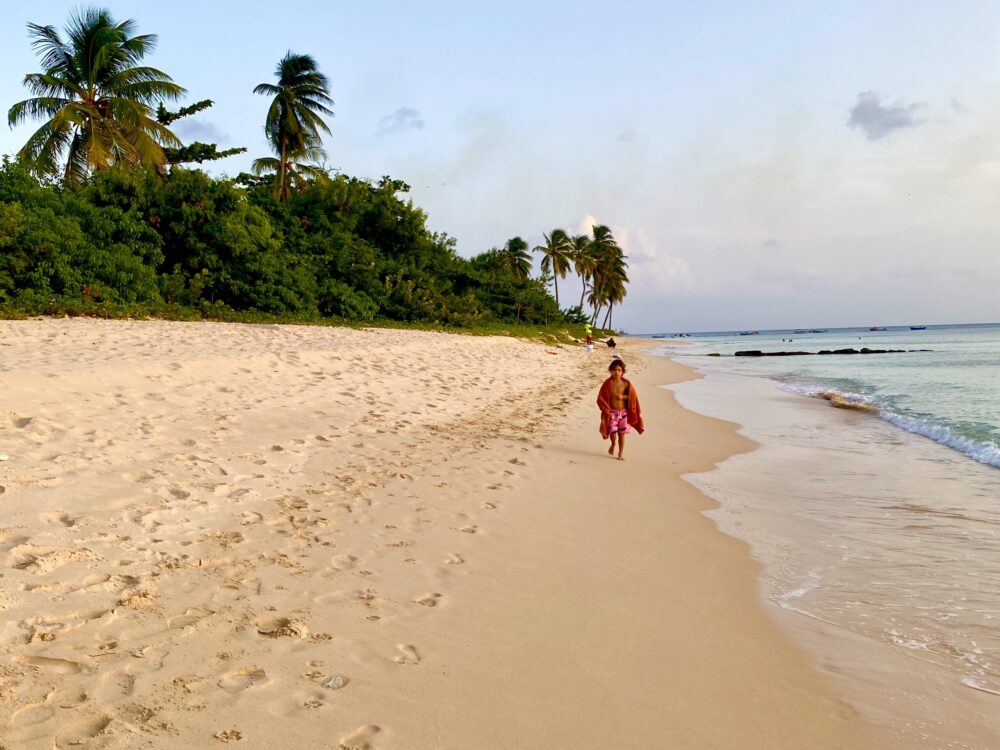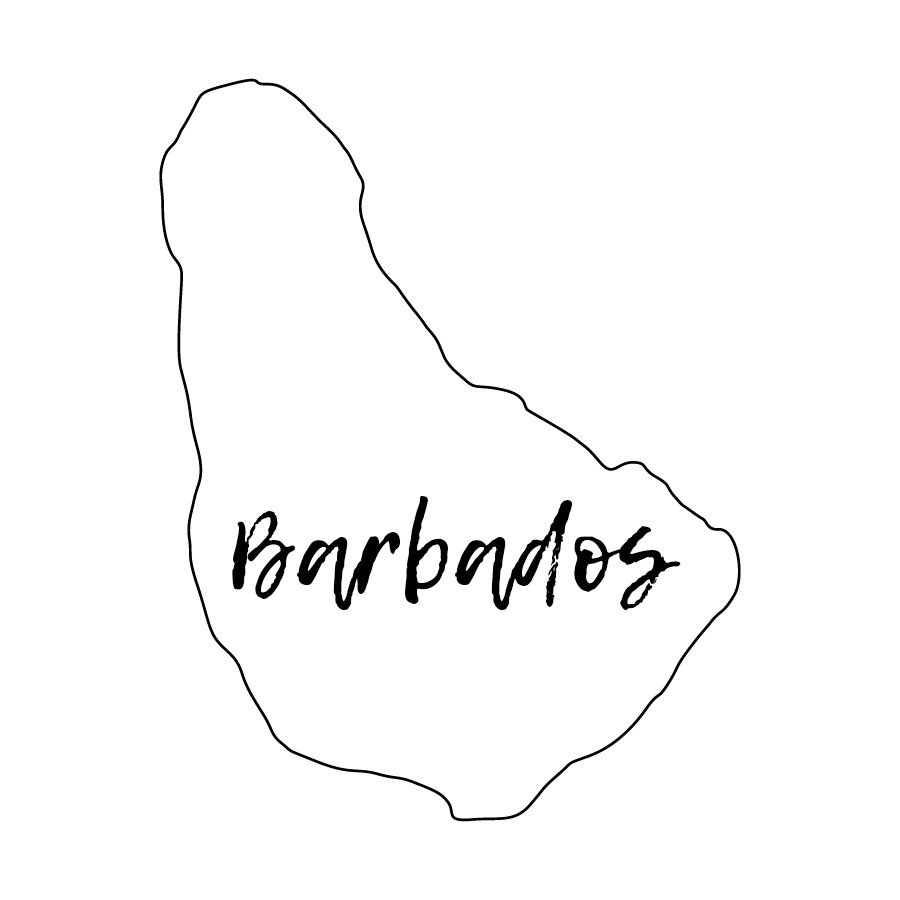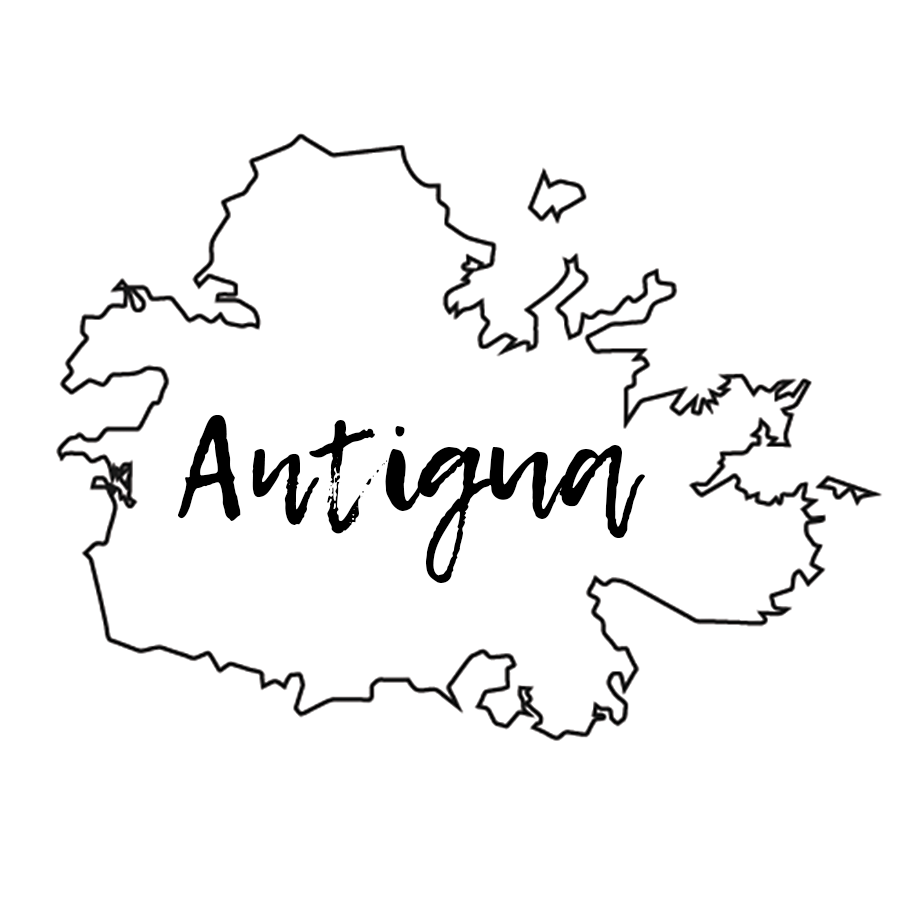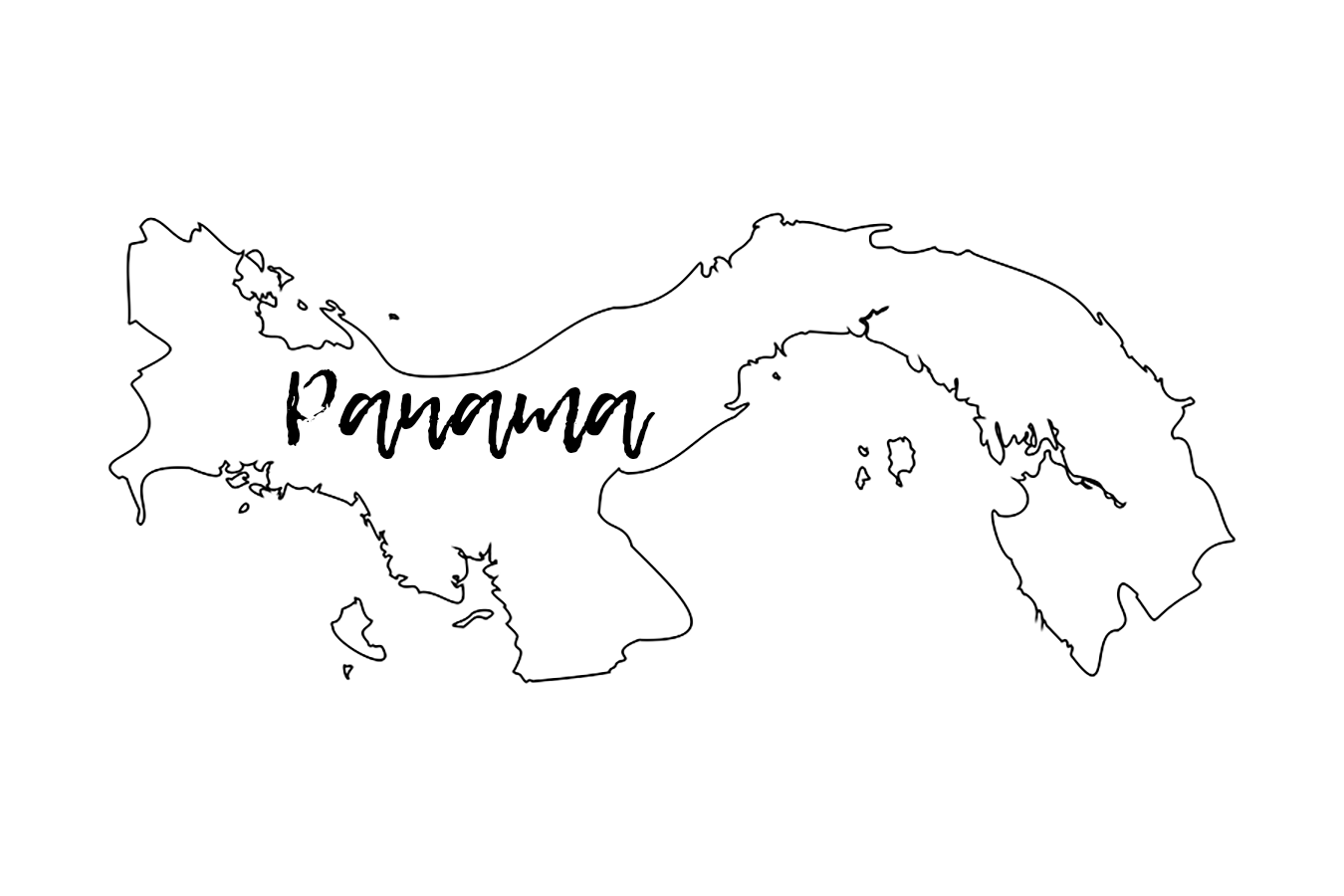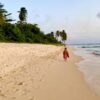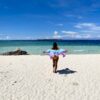Antigua & Barbuda
With three-hundred and sixty-five beaches, that’s one for every day of the year!
Antigua & Barbuda is an independent country that is part of the Commonwealth. It comprises of two-islands located at the very point that the Caribbean and Atlantic meet. The island is perhaps best known for its breathtaking beaches, luscious green forests and vibrant music scene.
The island has an interesting history, with the Ciboney (the first inhabitants of Cuba, also referred to as the stone-people) being the first settlers in 2400 BC and then the Arawaks arrived around the 1st century. The Carib people arrived later in 1500 but abandoned the island due to a shortage of fresh water. Antigua was then later colonised by the British, who used this as a base for naval operations in the Caribbean. Antigua & Barbuda gained its independence on 1 November 1981, ending the 350 year British rule.
Antigua is a much larger island than Barbuda. It is home to the majority of the population and businesses; with its seductive resorts and alluring cliff-top restaurants, it is undoubtedly the place you would want to choose for a luxe beach vacation.
The island is quite simply a tropical paradise; from the minute we disembarked the plane, we were blown away by the flora that surrounded us. The buildings had a colloquial charm and the chattel houses well-maintained, with gardens filled with purple floral displays glowing in juxtaposition against the evergreen. We were wholeheartedly welcomed by the Antiguans, engaging us with their warm, friendly manner and genuine desire for us to experience their beautiful island in its entirety.
Barbuda, the smaller sister, is a rural island located just north of Antigua with very little infrastructure and modern conveniences. This makes it a perfect destination for day trips or short stays, should you want to submerge yourself in nature and experience life stripped back to its most basic.
We can absolutely substantiate the claims that Antigua is home to some of the most beautiful, unspoilt beaches in the world. This is in part credit to a very forward-thinking Antiguan Government whom have not permitted buildings to be developed along the beachfront; Subsequently leaving luscious palm-lined beaches, with sheltered coves and boundless stretches of white and pink sands, extending almost exponentially into the distance. We visited during April 2022 when visitor numbers were virtually non-existent, so it was phenomenal to have these private moments – hypnotised by nature, allowing much self-reflection.
The dramatic rocky cliffs surrounding the beaches are simply captivating and it is here that properties perch majestically, tastefully designed and erected to complement their surroundings, with the most magnificent sea views.
The clear turquoise waters make it an excellent destination for snorkelling and diving. There is also a variety of sailing experiences available with Antigua boasting 155 marinas, with harbours such as Nelsons, Jolly and English being the most popular with tourists.
With Antigua’s laidback friendly vibes, stunning natural scenery, rich history and culture, it’s no wonder that it is such a popular Caribbean destination. Here are some of the highlights not to be missed during your stay.
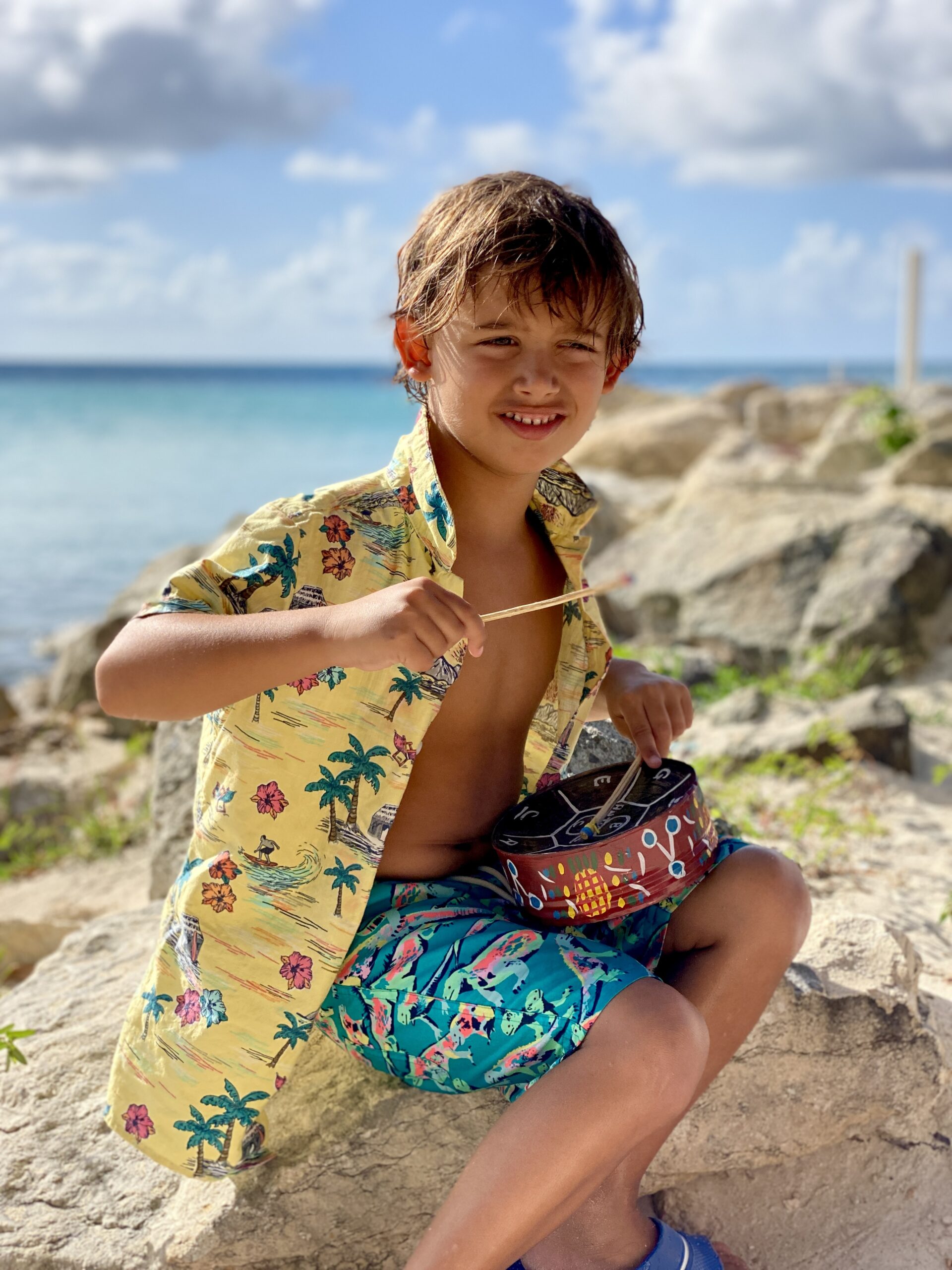
“Dickenson Bay”

“English Harbour”

“Sheer Rocks”

“Laviscount Island”
ISLAND HIGHLIGHTS
THE SPECIFICS
LANGUAGE:
English is the official language of Antigua, however, there are also a number of other languages spoken on the island, including Spanish, French, Portuguese, Garifuna and Carib. Many locals speak Antiguan Creole English. This dialect is sometimes referred to as “kitchen Antiguan” because it is most commonly used in casual settings and among friends and family.
CURRENCY & ATM:
The currency in Antigua and Barbuda is the Eastern Caribbean Dollar (XCD$). This currency is pegged to the US dollar; the equation is as follows: $1 USD = $2.70 XCD$.
The US dollar is accepted at many hotels and restaurants, but it’s always best to have some local currency to hand just in case. Items and services are often quoted in USD by the locals to assist tourists. So make sure you double-check which currency the seller has quoted you ahead of agreeing a sale.
There are several banks located throughout Antigua that have ATMs available. Here are a few of the most popular banks on the island: FirstCaribbean International Bank / Republic Bank (Antigua) Limited / Scotiabank Antigua Ltd / St. John’s Co-operative Credit Union Ltd. These banks typically have ATM machines that accept Visa, Mastercard, Cirrus and Plus cards. Many restaurants, hotels, large supermarkets and tourist destinations accept credit card.
INTERNET SPEEDS:
Internet speeds in Antigua are generally fine for tourist’s requirements, although there can be some fluctuations depending on where you are located on the island. You can expect a general download speed of around 10 Mbps, with some areas reaching up to 20 Mbps. The Antiguan Government have been slow to realise the importance of fast internet speeds to encourage welcome stamp visitors to work remotely on their island. This was the reason we had decided against living in Antigua despite being seduced by its natural beauty. Antigua are however, beginning to roll out the high speed broadband which is prevalent on the north of the island, making the remote working dream here, soon to be a reality.
TRAVEL ADAPTOR:
In Antigua and Barbuda the power plugs and sockets are type A and B. Plug A has two flat parallel pins and Plug B has two flat pins and a grounding pin. Antigua operates on a 230V supply voltage and 60Hz. So you can use your electric appliances in Antigua and Barbuda if the standard voltage in your country is in between 220 – 240 V as is in UK, Europe, Australia and most of Asia and Africa.


ENTRY REQUIREMENTS:
Antigua and Barbuda has removed all COVID-19 related restrictions such as proof of vaccination and testing for passengers arriving by air and port.
ALL visitors will be required to complete an immigration form distributed on the flight to be presented on arrival.
With the COVID protocols consistently changing, we recommend that you check the Government Foreign Travel website for the most up to date travel information.
VACCINATIONS:
There are no mandatory vaccinations required for entry into Antigua, however, it is recommended that all visitors are up-to-date with routine vaccinations such as Measles – Mumps – Rubella (MMR), Diphtheria – Tetanus – Pertussis (DTaP), Polio, Shingles, Flu, Chicken Pox and COVID 19.
For all visitors planning to spend most of their time outdoors, or participating in any activities such as hiking, or swimming in freshwater lakes and rivers – they are advised to consider additional vaccinations such as Rabies and Hepatitis B based on their individual risk assessment.
All visitors are advised to have a course or booster of Hepatitis A and Typhoid as there is a risk of such diseases across most parts of the world, contracted through contaminated food or water.
Mosquito-borne infections such as Dengue, Zika and African Tick-Bite Fever pose a risk to all visitors in Antigua, especially pregnant women. You would be very unlucky to become infected but there is still a risk with such diseases active here. Mosquitoes are most prevalent at dusk and dawn. Please ensure you are protected by using mosquito repellents such as Deet, and netting when required. We also ensure apartment doors and windows are kept closed to avoid the pests entering our home.
Please note that the most up-to-date information states that there is NO RISK of Malaria and Yellow Fever in Antigua. Please refer to the latest travel advice from the Foreign, Commonwealth & Development Office (FCDO) before travelling, or visit your GP surgery, as they will be able to advise and book you in for any relevant vaccinations.

SAFETY:
We have found Antigua to be a very safe island to travel around. Like many places around the globe, crime and drugs are prevalent. As with daily life wherever you may be in the world, you just need to take care and keep your wits about you – remaining diligent with valuables and personal safety at all times. Here is our insiders guide to staying safe:
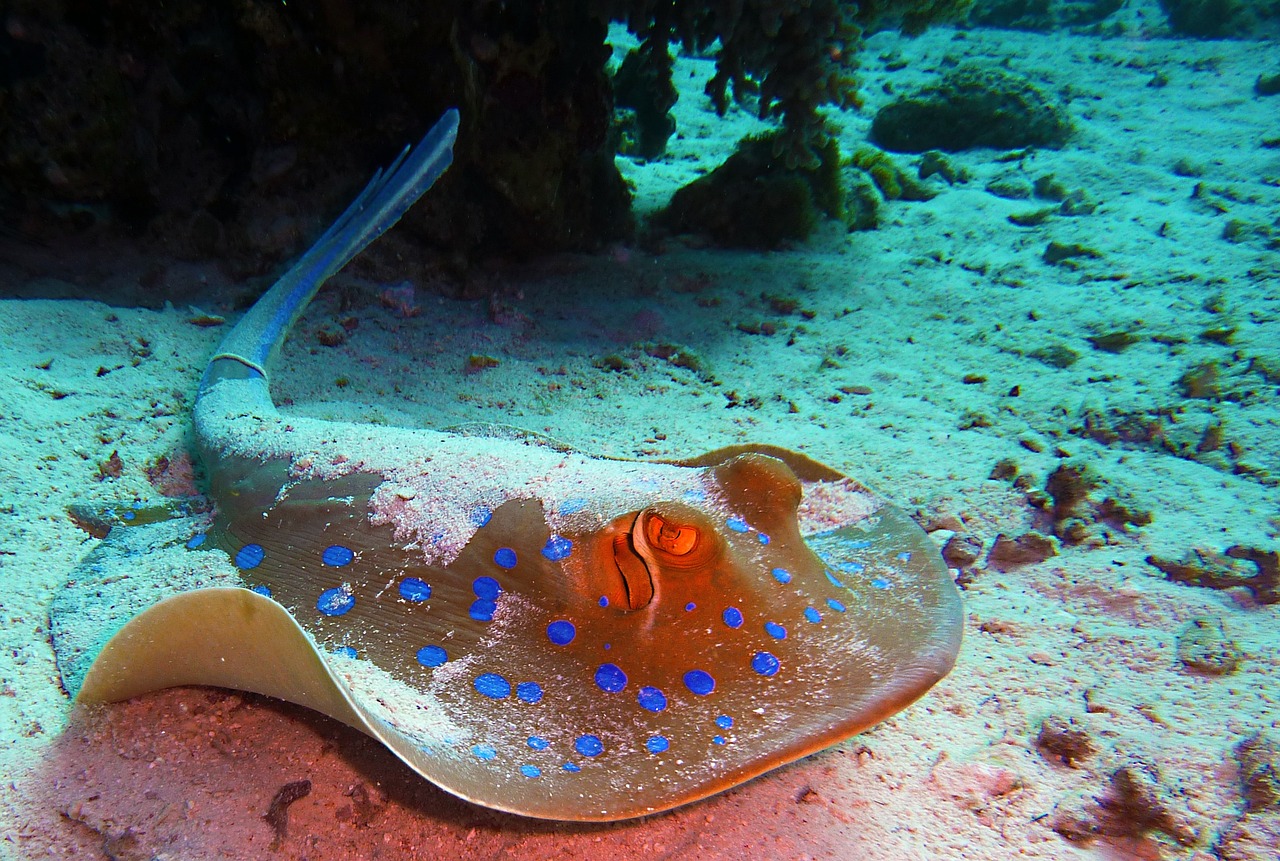


WHERE SHOULD I STAY?
Antigua & Barbuda comprise of two very different island experiences. There are very few accommodation options in Barbuda, as it is more rural lacking the infrastructure and modern conveniences of Antigua, so is perfect for a day trip to submerge yourself in nature. There are daily ferry crossings scheduled between the two islands.
Antigua, on the other hand, has many luxurious resorts, restaurants and eco-tourist attractions, with stunning stretches of beach; three-hundred and sixty-five to be precise, circumnavigating the island.
Antigua is a small luscious island that is – thankfully, not hugely developed like other Caribbean islands such as Barbados, which makes it one of the most beautiful. As a result, hotel and rental property availability can be limited, so we would recommend booking your trip as early as possible – to give you more options to choose from.
Here, is our insider’s guide of the different coastlines and what they have to offer – to ensure you choose the perfect place to stay.
Nature Lovers & Surfers Head North-East.
The north-east coast of Antigua is known for its rugged coastlines, providing a more tranquil and relaxed stay, with low visitor numbers to this part of the island. It is where the impetuous winds of the Atlantic blow the hardest, creating perfect conditions for Windsurfing and Kitesurfing enthusiasts. Jabberwock beach down to Half Moon Bay have popular spots where you can spectate, or attempt these adventurous sports.
Half Moon Bay Beach and Exchange Bay are the surfing hot spots with the most consistent breaks. It can be a bit of a trek to reach the beaches on this coastline, but they are considered to be beautiful and untouched, so worth the effort.
Venture east, if you want to submerge yourself in nature. Sit back and enjoy watching the brown pelican, with their colossal wingspan, gliding majestically above you and skilfully plunge into the water to catch their prey.
You have Devil’s Bridge National Park – a limestone archway carved out by ocean waves, this creates an impressive backdrop for your Insta-selfies.
We can recommend a short boat trip to explore Stingray City, where you are met by numerous stingray that will circle you in a playful manner, wanting to be petted. Plus, Laviscount Island with its red mangroves, beautiful macaws perched on tree branches and indigenous Aldabra giant tortoise roaming the sanctuary at a typical Caribbean pace!
Our favourite restaurant Rokuni is perched on a cliff top on this eastern coastline, with asian-inspired fusion foods and delectable cocktails that will leave your tastebuds craving more, more, more!
Whereas the tradewinds make swimming less appealing here in the north-east, if you venture north-west you will reach Dickenson Bay – one of the most popular beaches the island has to offer, with numerous eateries to choose from. And with the capital St John’s nearby to access the large Epicurean supermarket and the bustling delights of Jolly Harbour, it is a convenient location to choose for the best of all worlds.
With high speed internet limited to the north of the island currently, you will find mid and long-term accommodation to be fairly limited in the north Dickenson Bay area. For short-term stays, we love the Siboney Beach Club for its on beach location, attentive service and clear waters. Accomodation options are fairly limited on the east coast, so you may need to head further north.
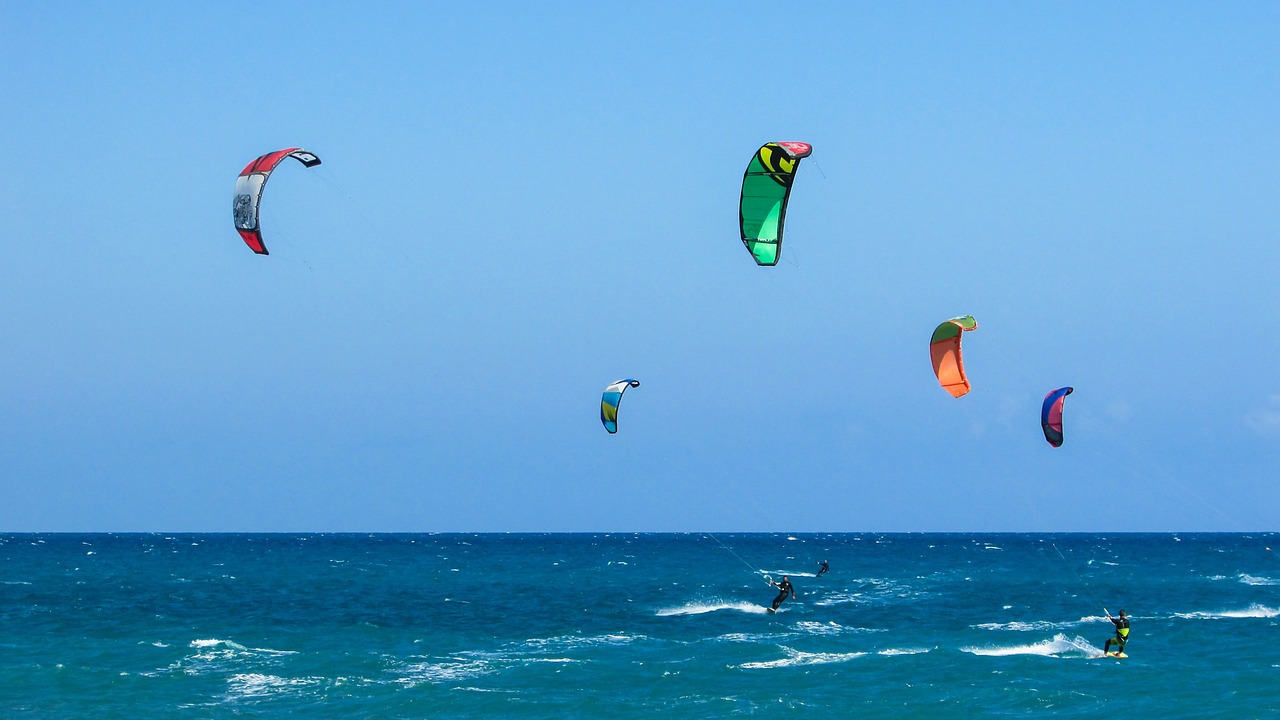
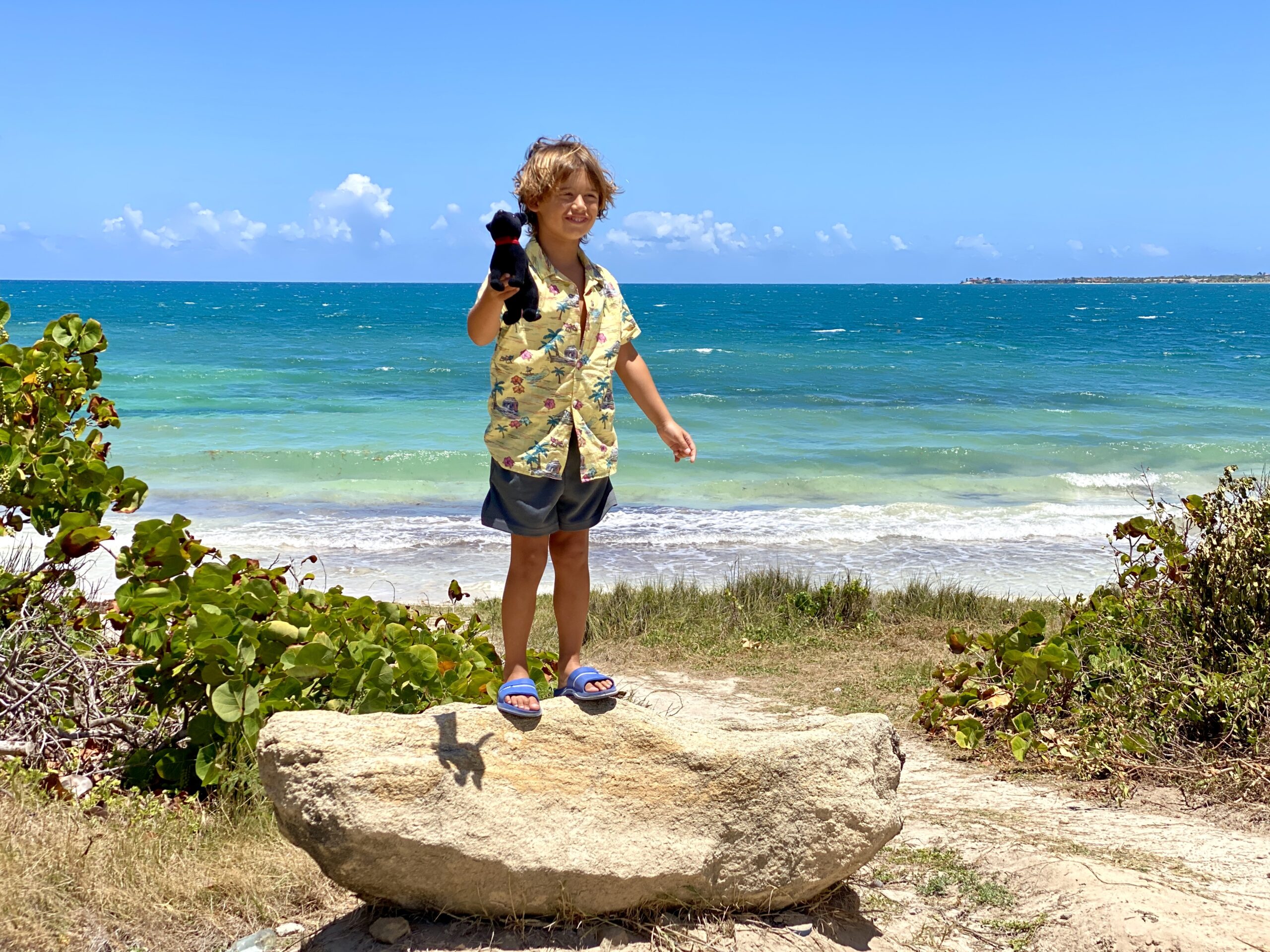
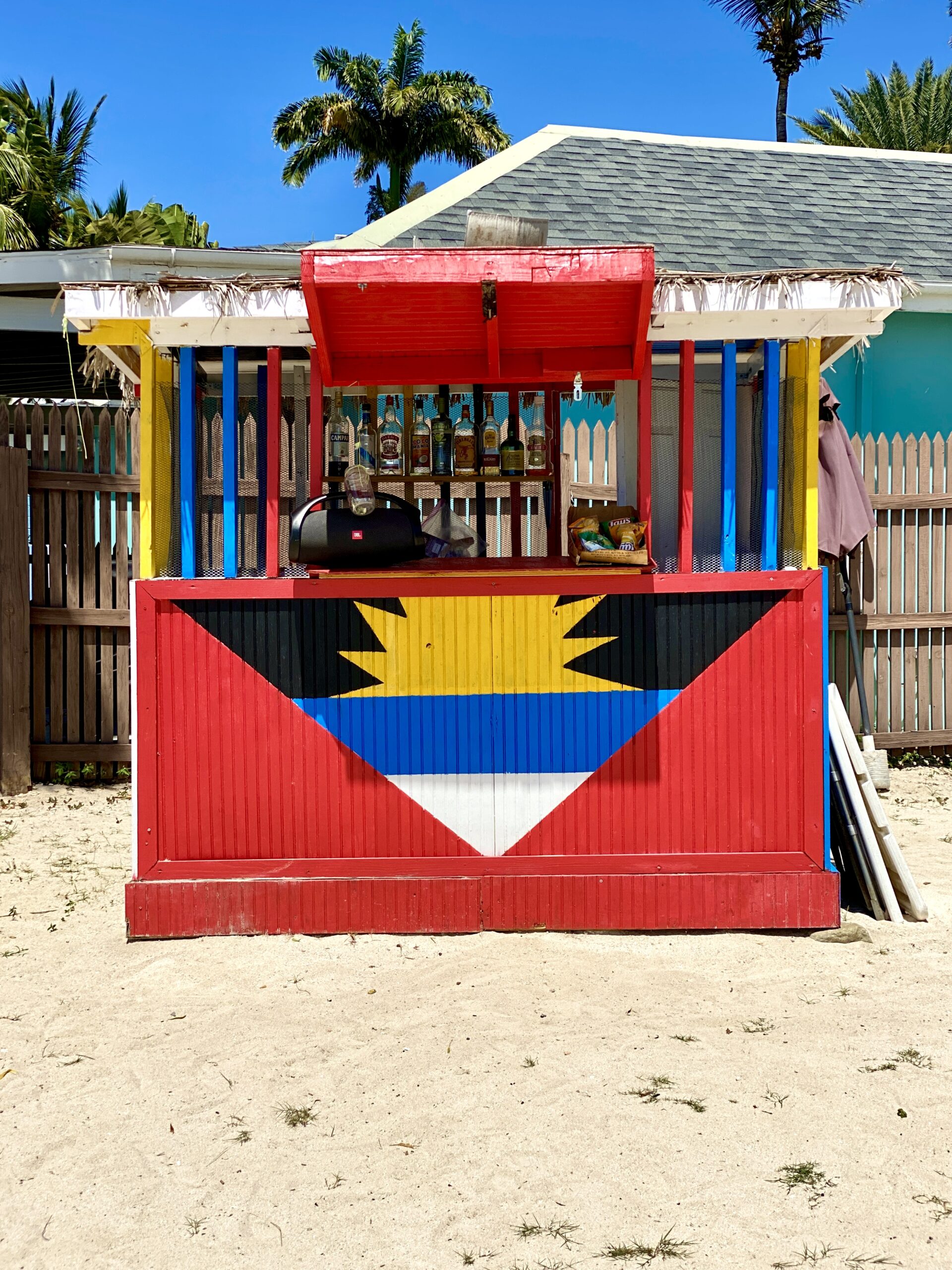


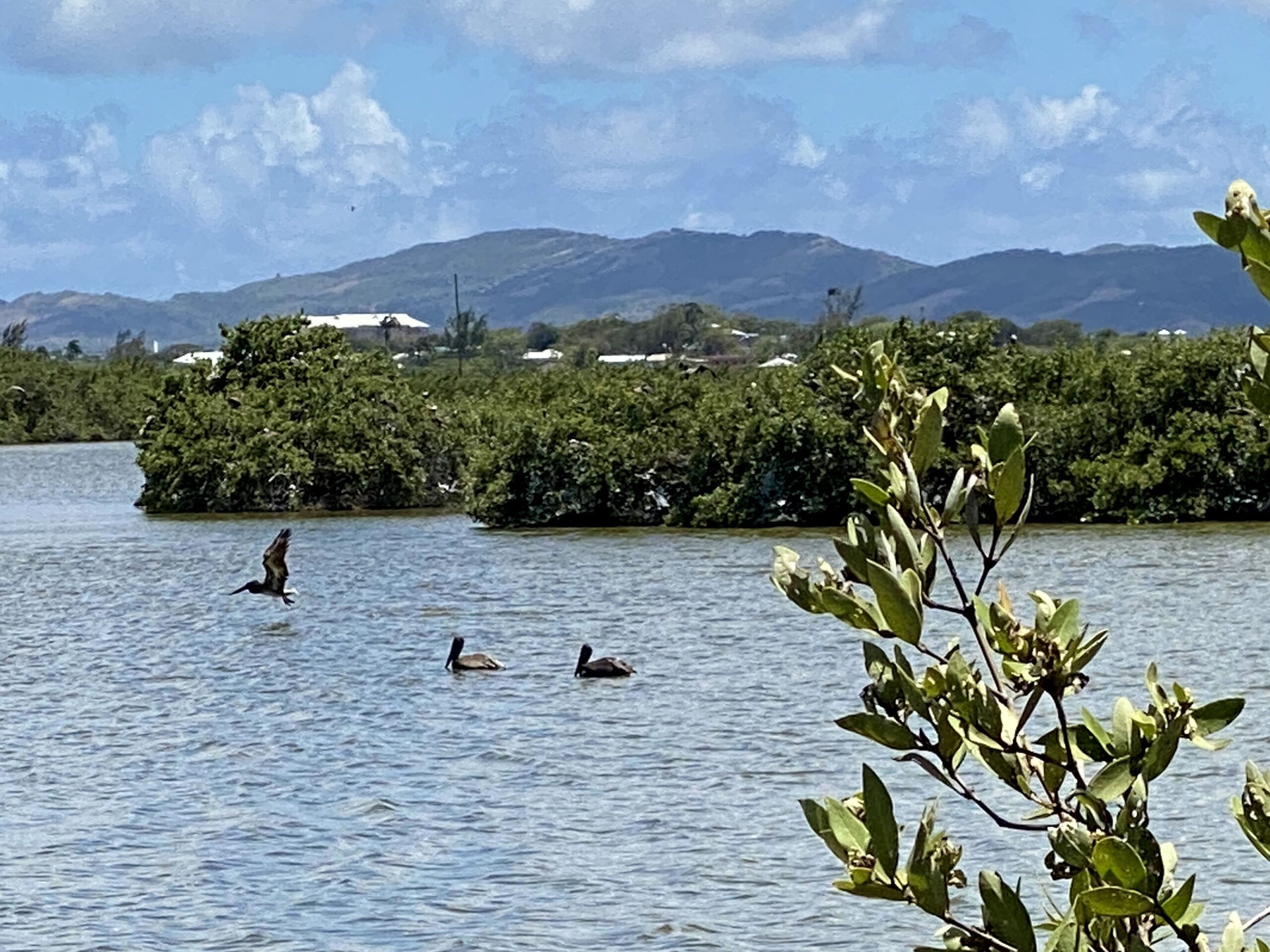
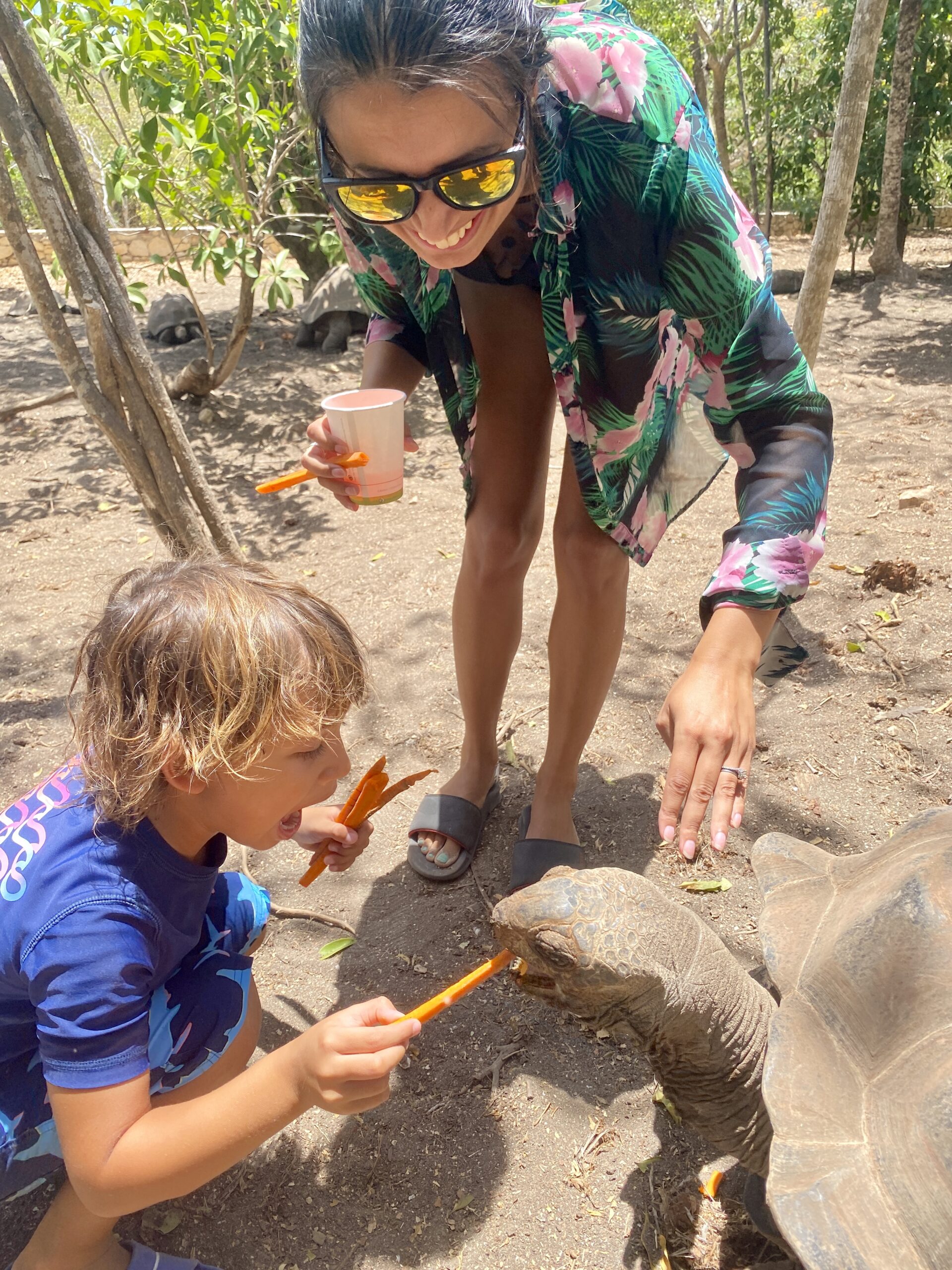
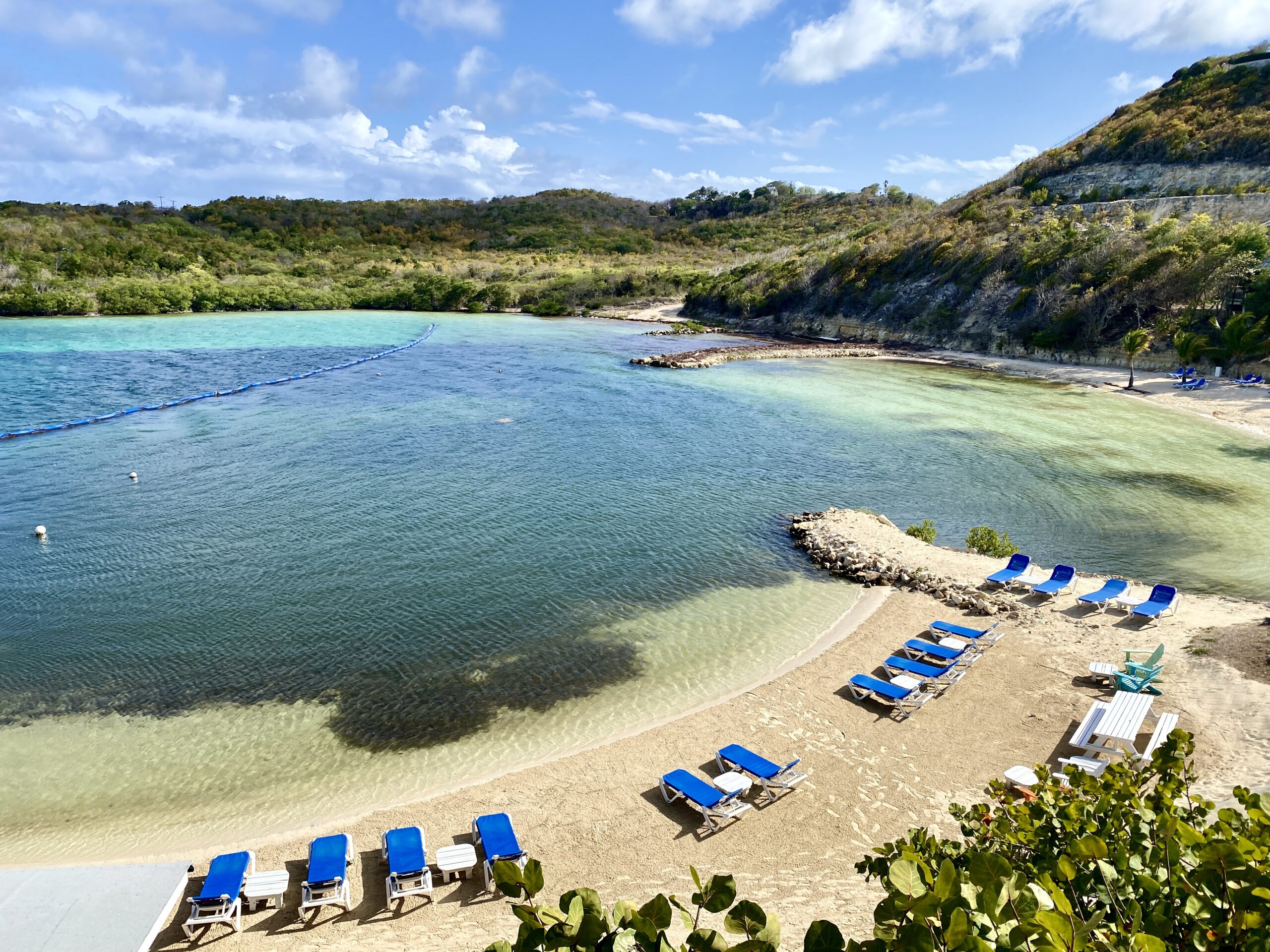
Dive Down to the West Coast.
For any water babies that love to swim, snorkel and dive, the beaches and sea beds all along the west coast are covered in glorious white sands and have the calmest waves, so you will feel safe exploring the waters here. You also benefit from the most spectacular sunsets on the west.
Nestled along the north-west coast of Antigua, you will find Jolly Harbour – a natural harbour that serves as home to a bustling marina community and you will find a huge number of accommodation options here.
The Jolly Harbour Marina is one of the busiest in the Caribbean and can accommodate boats up to 140 feet long. There are over 400 moorings available and the marina also has a shipyard making it a convenient place to dock your boat whilst you explore the island. This laid-back group of beaches, restaurants and bars is the perfect place to relax and enjoy the lively social scene, as it draws the highest tourist numbers to this part of the island.
If you head south, you will reach Ffryes Beach, one of our favourite sandy spots due to its tranquility, as there are no resorts or large ships here – just sand and deep blue ocean. Ffryes is known for its sweeping coastline, dramatic cliffs and turquoise waters. It’s a popular spot for snorkelling and diving. There is a lovely playground here and plenty of green space for a game of football with the local children, that are incredibly warm and inclusive.
There are exclusive modern properties such as Tamarind Hills scattered on the cliffside here, this would be my dream location for staycations on the island, primarily for the breathtaking views out to sea.
Sheer Rocks is perched on this cliffside; an idyllic, seductive restaurant setting with private infinity pools, tantalising dishes and mouth watering cocktails – a heavenly experience not to be missed!
We stayed near to Darkwood beach on our Antiguan escapade. This was another peaceful beach surrounded by luscious green vegetation. We scarcely met another individual whilst we strolled along the beach here.
There is a rather basic, but charming inflatable waterpark activity for those looking for some adrenaline filled fun. Our son loved navigating the course and pushing his father into the sea!
Turner’s Point is the final beach you will come to on your west coast adventure. You can take a hike to Fort Johnstons Point for some incredible views. Turners Beach is yet another beautiful white sand beach perfect for swimming, sunbathing, or simply taking in the stunning views and watching the flaming orange skies at sunset. There’s a lovely rocky sheltered area that is perfect for snorkelling and spotting rays and a number of vibrant fish.
You have a restaurant serving traditional Antiguan fodder, conveniently positioned on the beach here and Orries Beach Bar across the road – both venues providing a very authentic island experience serving Fungee & Pepperpot, Ducana, Saltfish and Conches all to be washed down with their famous Rum Punch!
So if you intend to spend most of your time lazing on beaches, west is best!
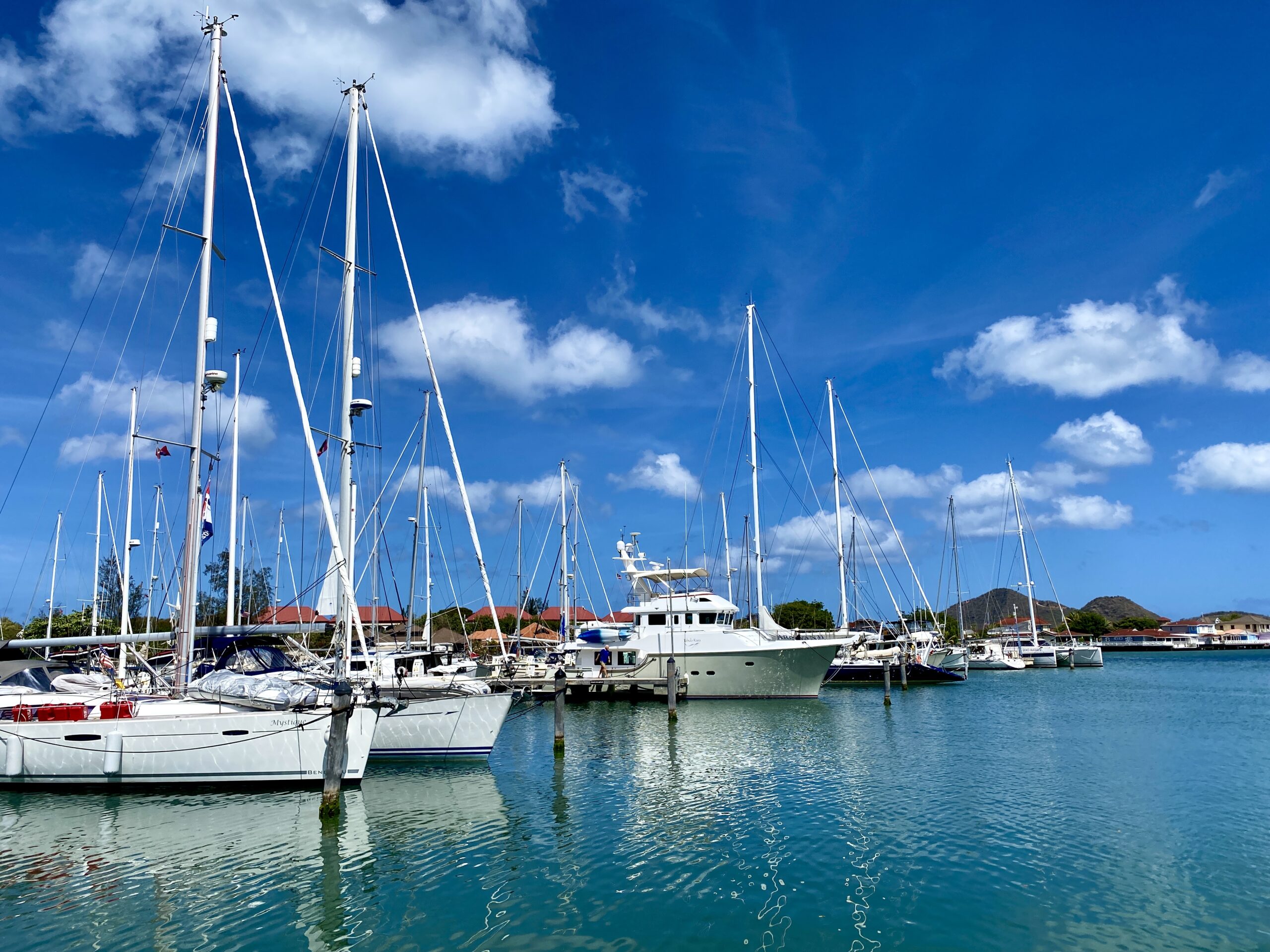
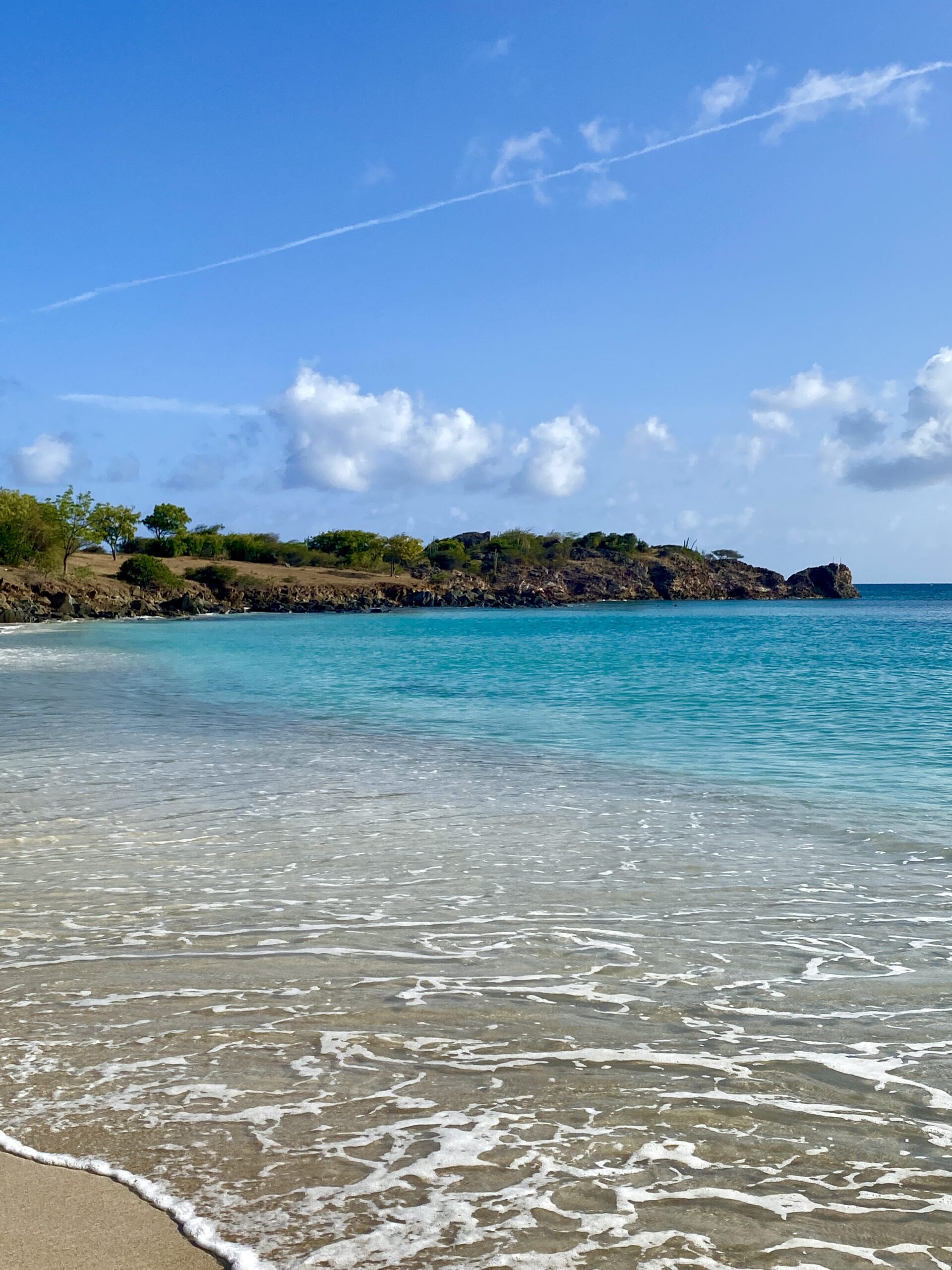
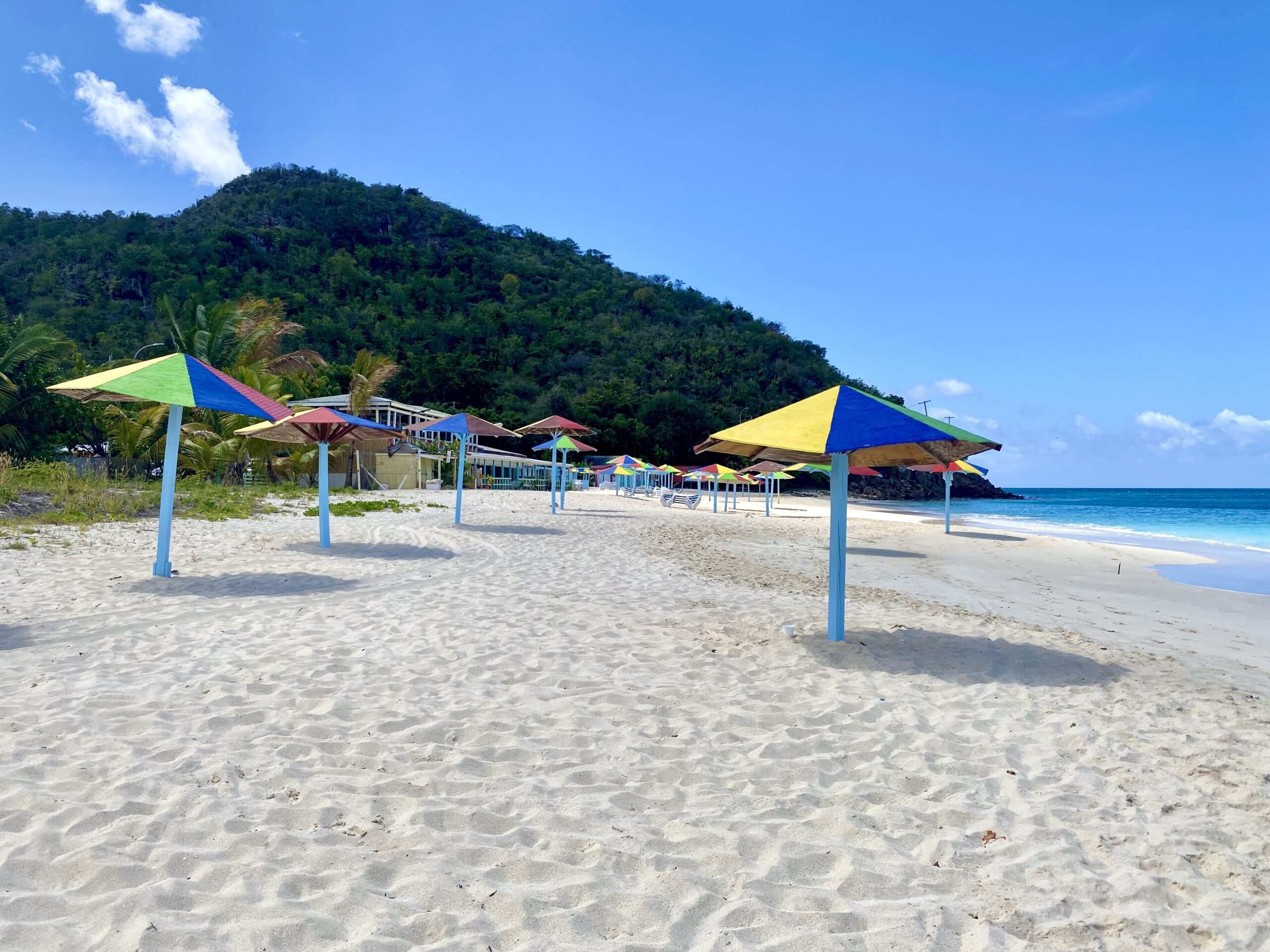

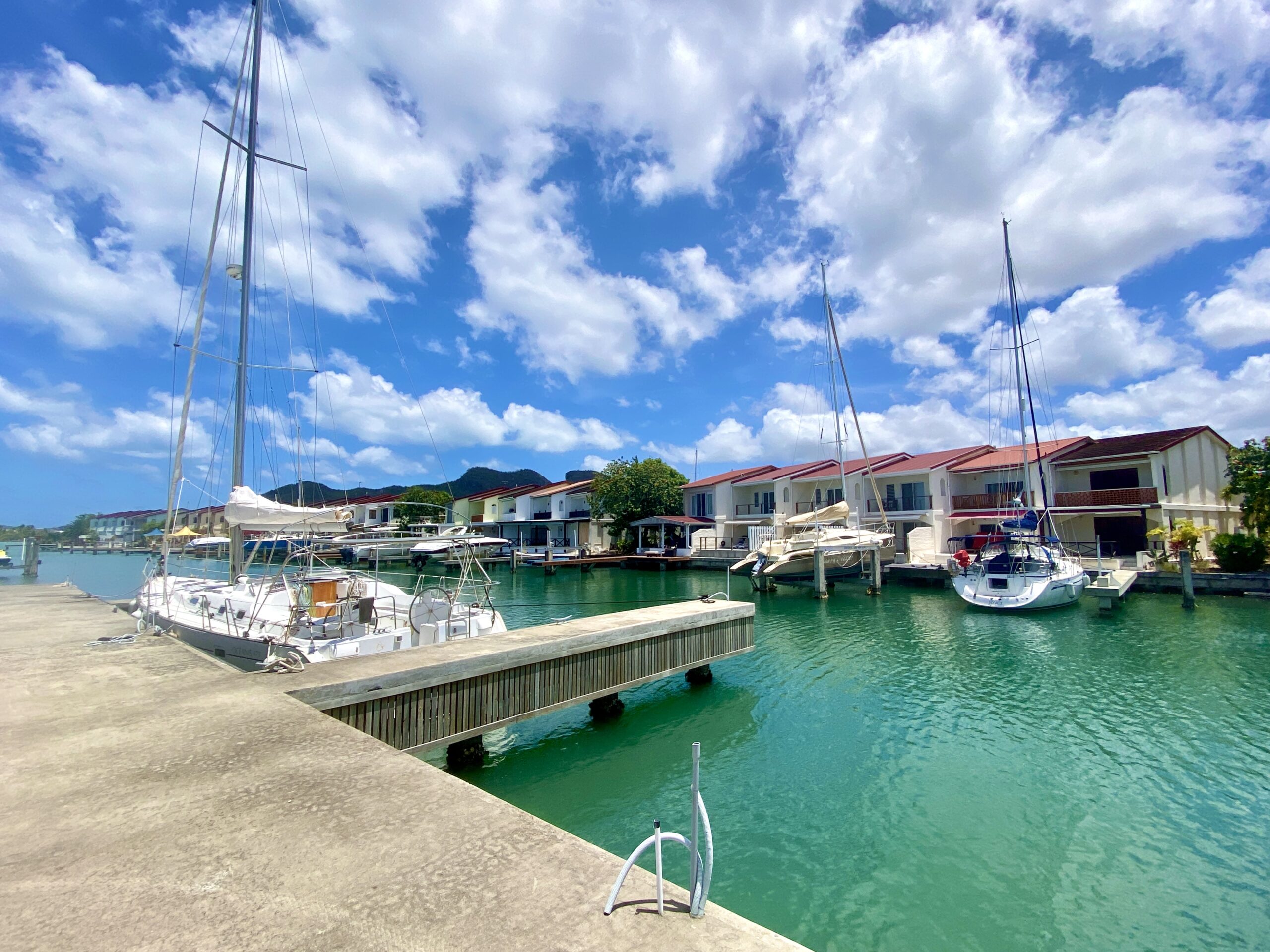
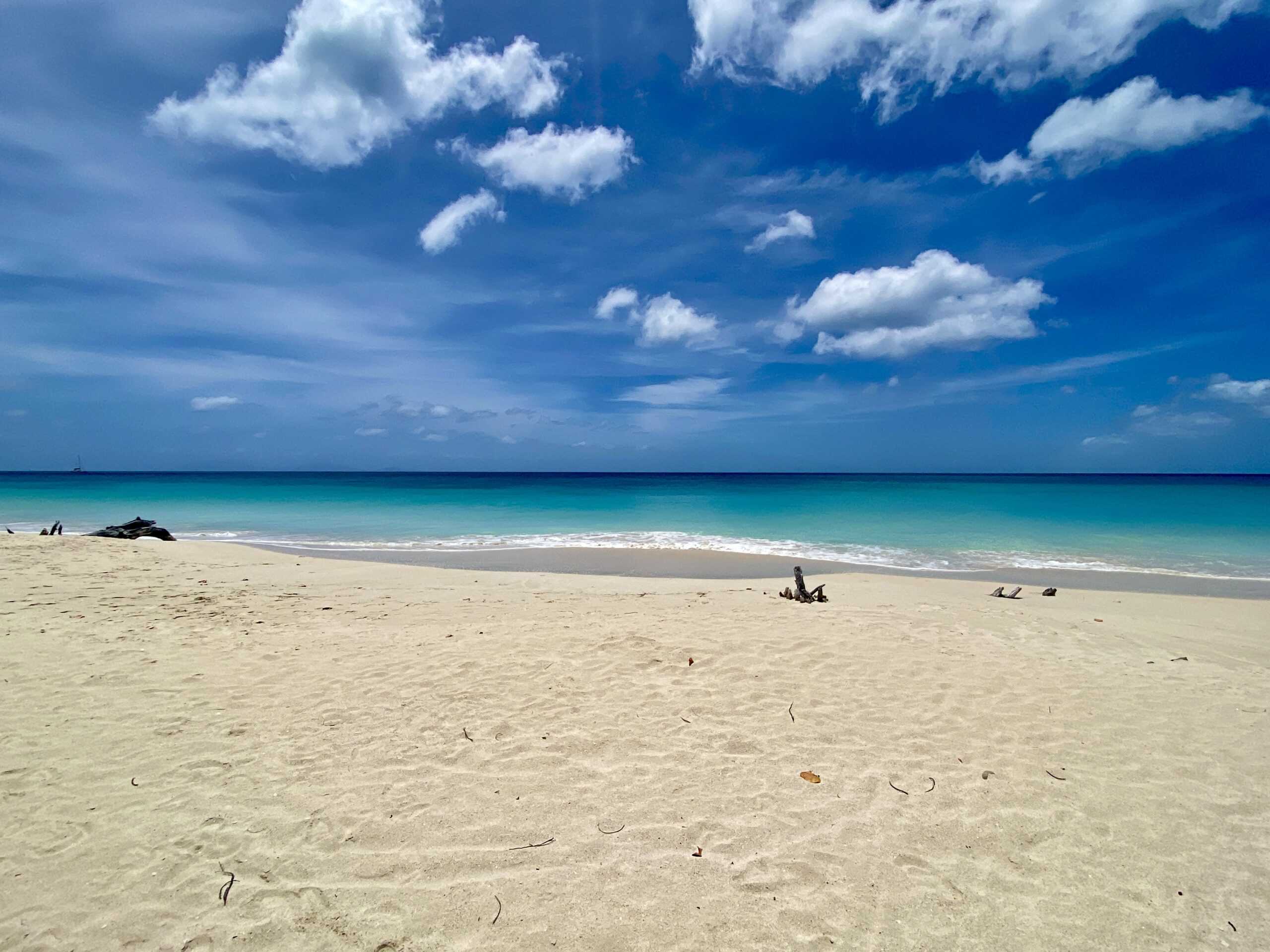
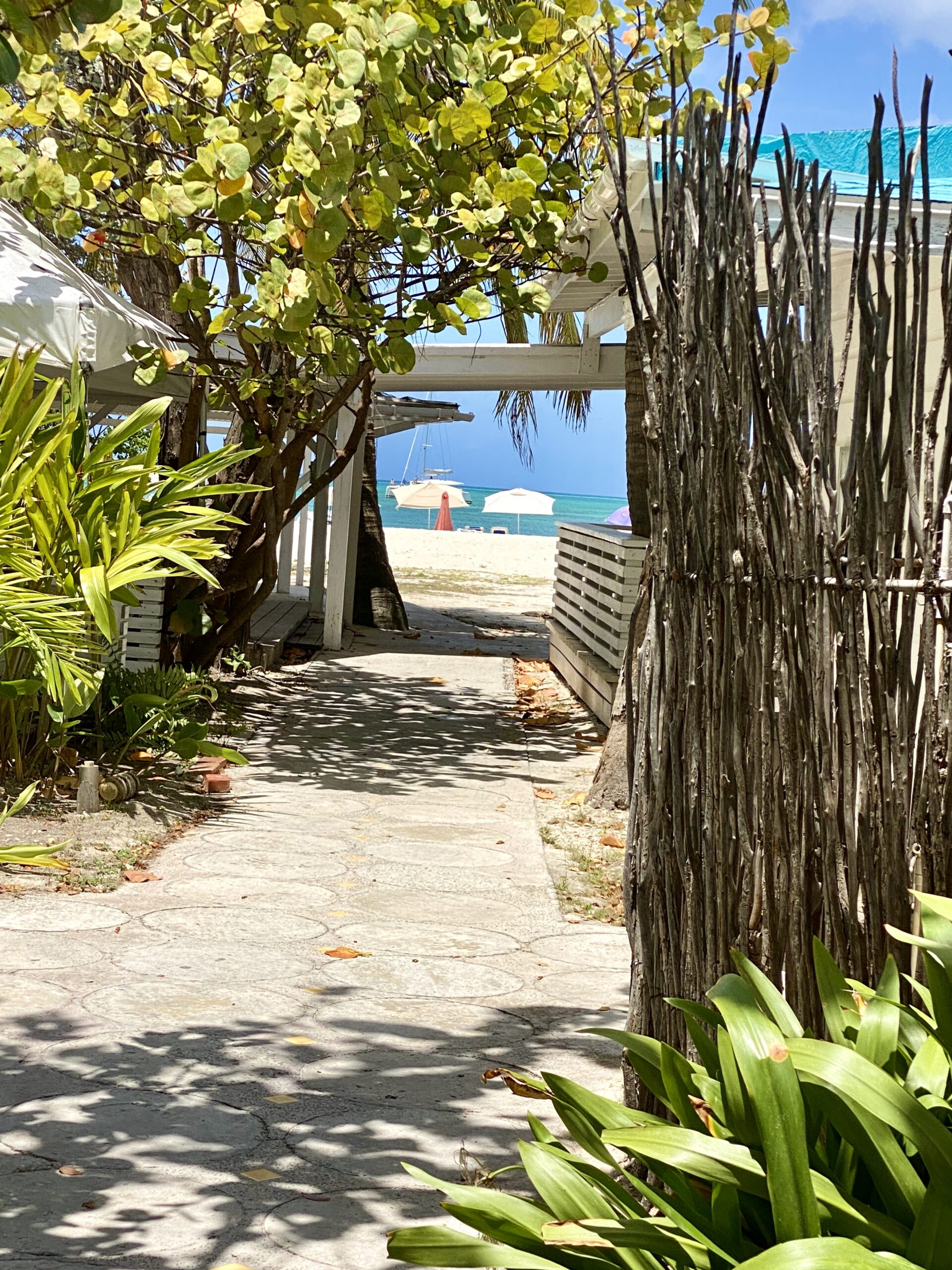
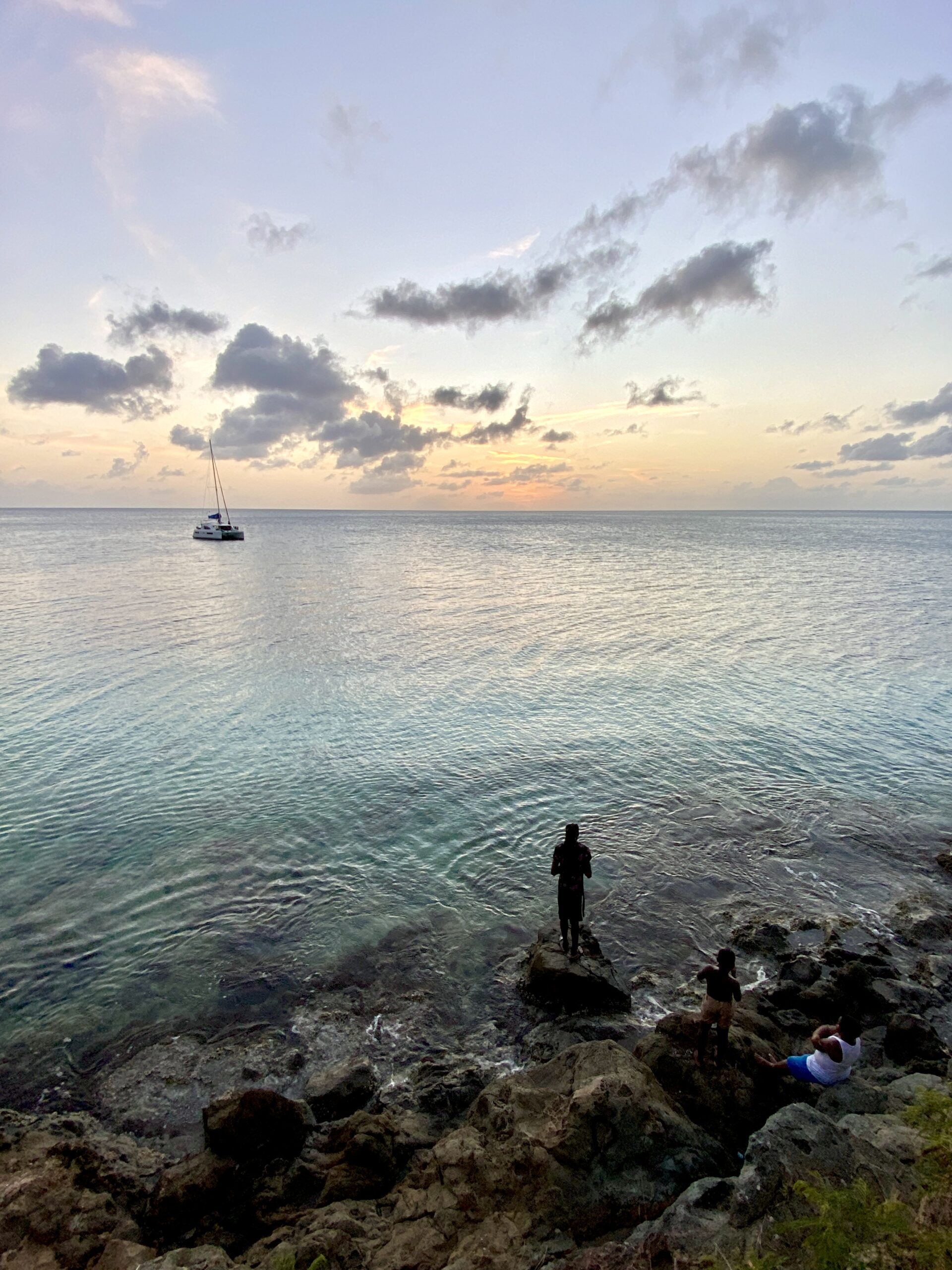
Maritime History Enthusiasts Head South.
The south-coast of Antigua is best known for its lively atmosphere, stunning vistas and a must-see destination for any traveller looking to explore the region’s rich maritime history. It is worth noting that there are fewer accommodation options in the south when compared to the west, so start your holiday planning early.
The south is home to Nelson’s Dockyard National Park, one of the most popular attractions on the island; A site that was once used as a base by Lord Horatio Nelson in the late 18th century during his time in the Royal Navy. The park preserves the remains of this historic Georgian dockyard so visitors can explore the old buildings and fortifications. It is now home to luxury yachts and modern-day pirates alike!
Exploring the nature reserves is a must when visiting Antigua’s south coast. You can take a Rainforest Canopy Tour, zip-lining through the towering palms alongside the monkeys, or hike through one of the many trails at Nelsons Dockyard National Park where you can see lush vegetation, luxury yachts and delve back in time.
English Harbour is bustling and home to many restaurants and late night bars. It is more than just another pretty beach town, it’s a living monument to Antigua’s long and storied maritime history. This natural harbour was discovered by Christopher Columbus in 1493, and it has been an important port city ever since. From pirate havens to naval bases, English Harbour has seen its fair share of action over the centuries.
Pigeon Point Beach is a secluded and tranquil spot located near English Harbour on the southern tip of Antigua. This beach features soft white sand, crystal-clear turquoise waters, and plenty of shady spots under coconut trees to relax in. There are excellent snorkelling opportunities – just make sure you bring your own snorkelling gear as it is tricky to purchase on the island!
Shirley Heights is a restored military complex perched atop one of the highest vantage points on the island. The lookout offers a breathtaking panorama of English Harbour and views stretching from Montserrat and further north past Redonda Island. It is the most sensational setting for viewing sunsets, when the rich blue skies burst into flaming oranges.
Shirley Heights offers a variety of activities for visitors, from energetic hiking trails to leisurely picnics. The hillside features two 18th-century military ruins, where you can explore the old fortifications that were used by British troops.
On Sundays, visitors can join in on local festivities and enjoy barbecue dinners from local vendors and watch traditional folk dancing to steel drum music. DJs play reggae, soca and calypso beats into the late hours which make this a very popular party spot for tourists. It’s a great way to meet new people while experiencing Antiguan culture first-hand.
The south coast of Antigua also has no shortage of vibrant markets filled with handmade souvenirs and delicious restaurants serving up local cuisine and international dishes alike, with live music to get you gyrating those hips soca-style.
In summary, go North-East for rugged coastlines and to enjoy the laidback surf scene. South to soak up Antigua’s maritime history and West for pristine sandy beaches with clear calm waters and a vibrant social scene.
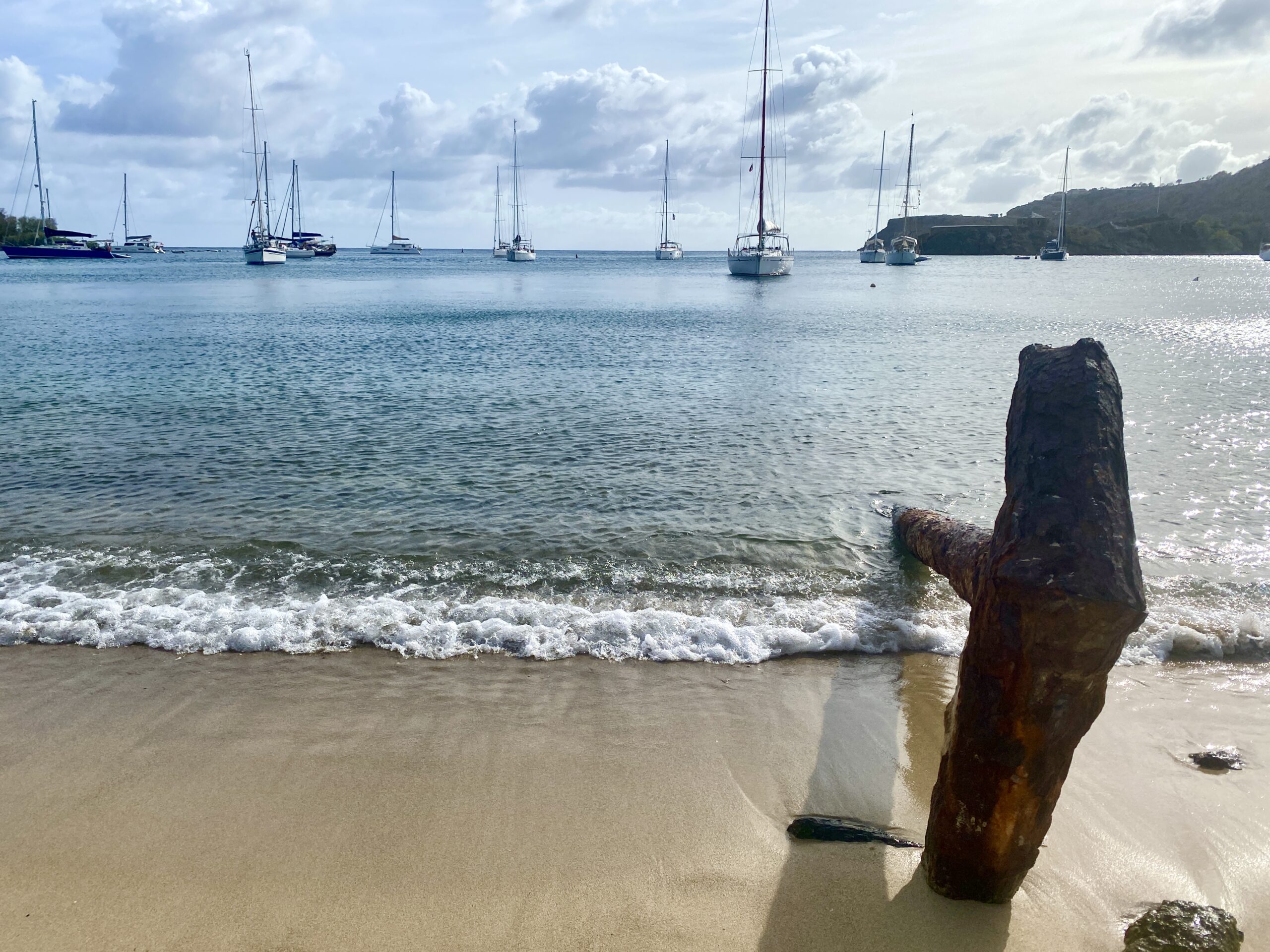
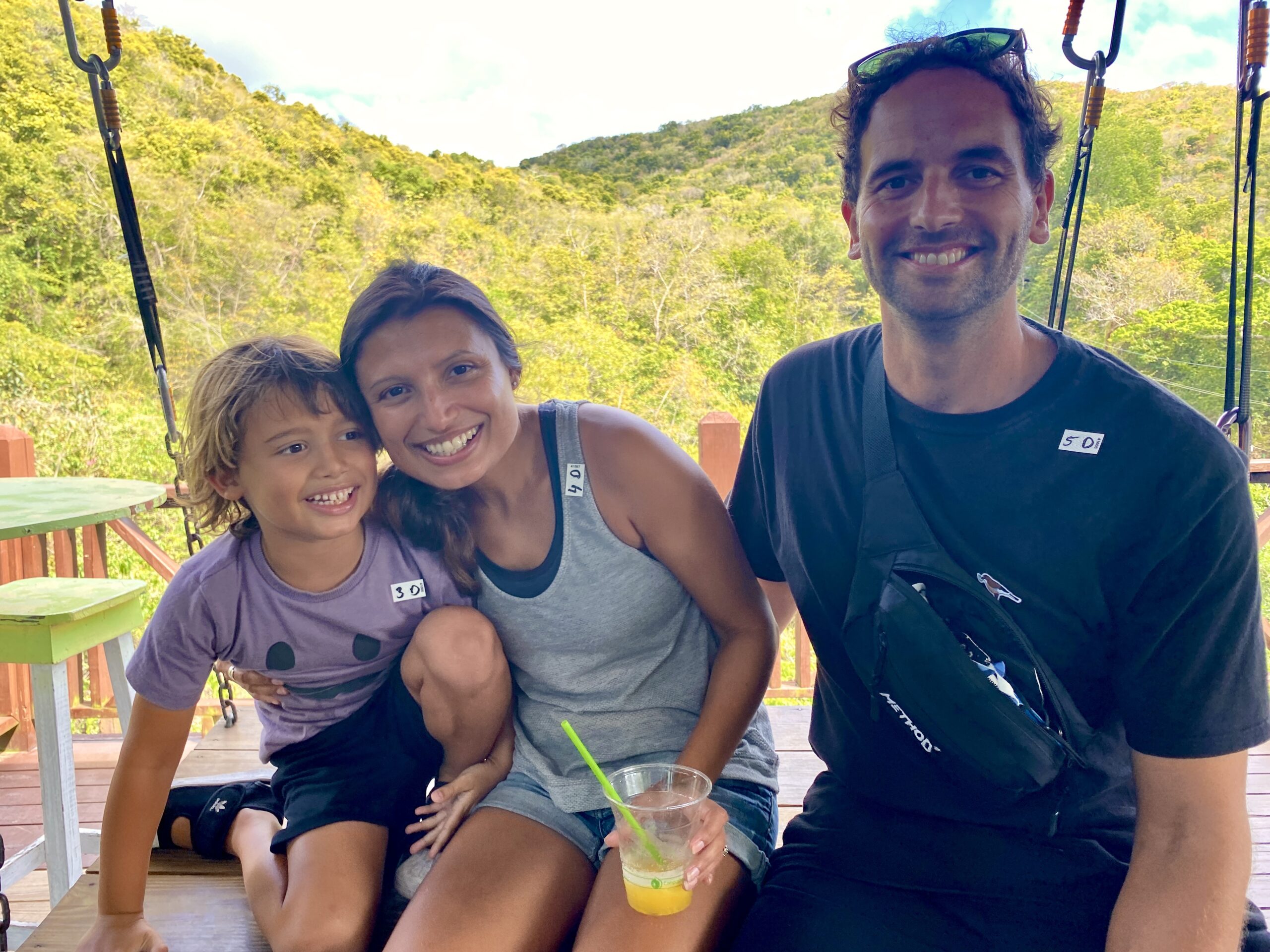
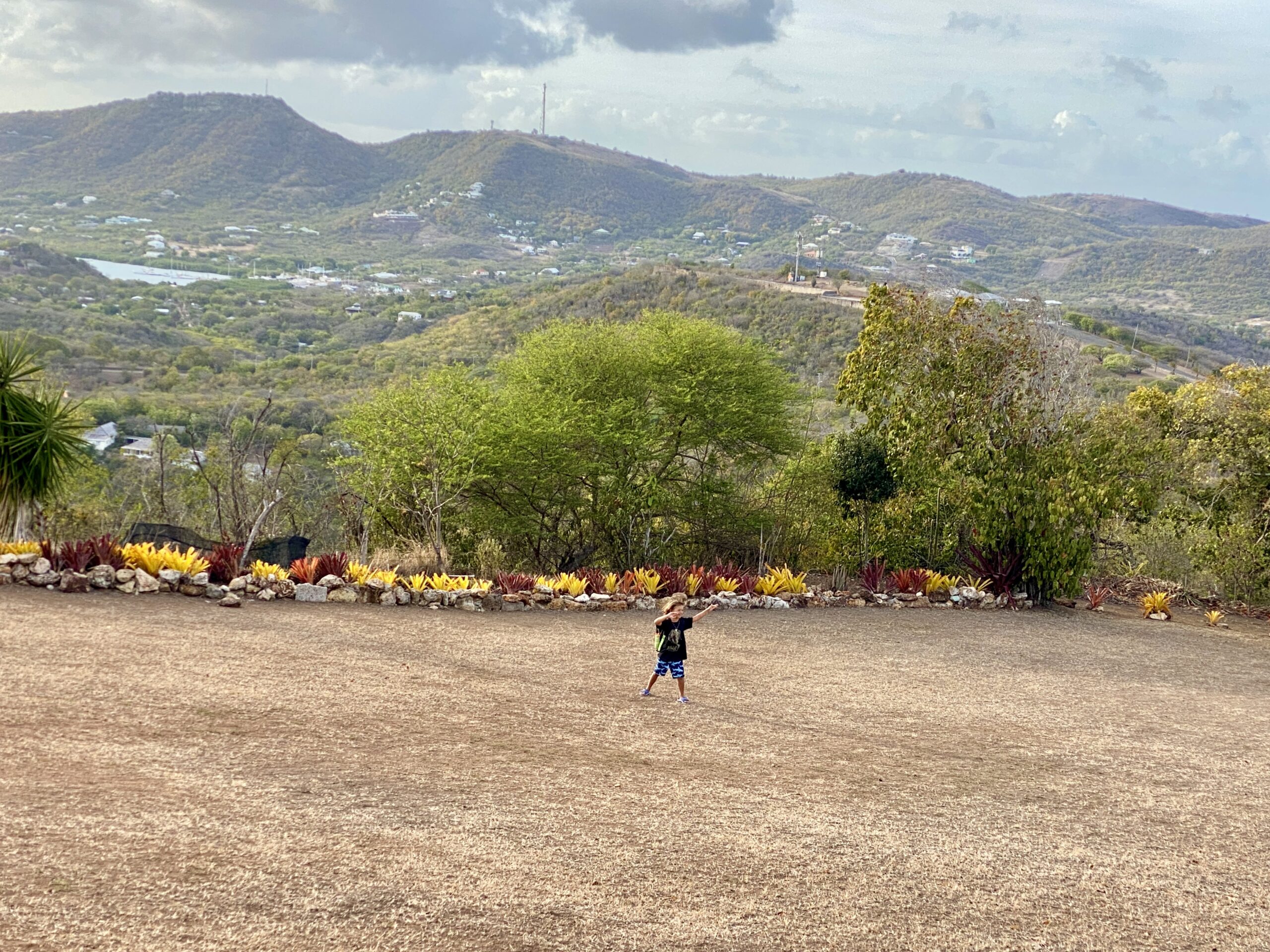
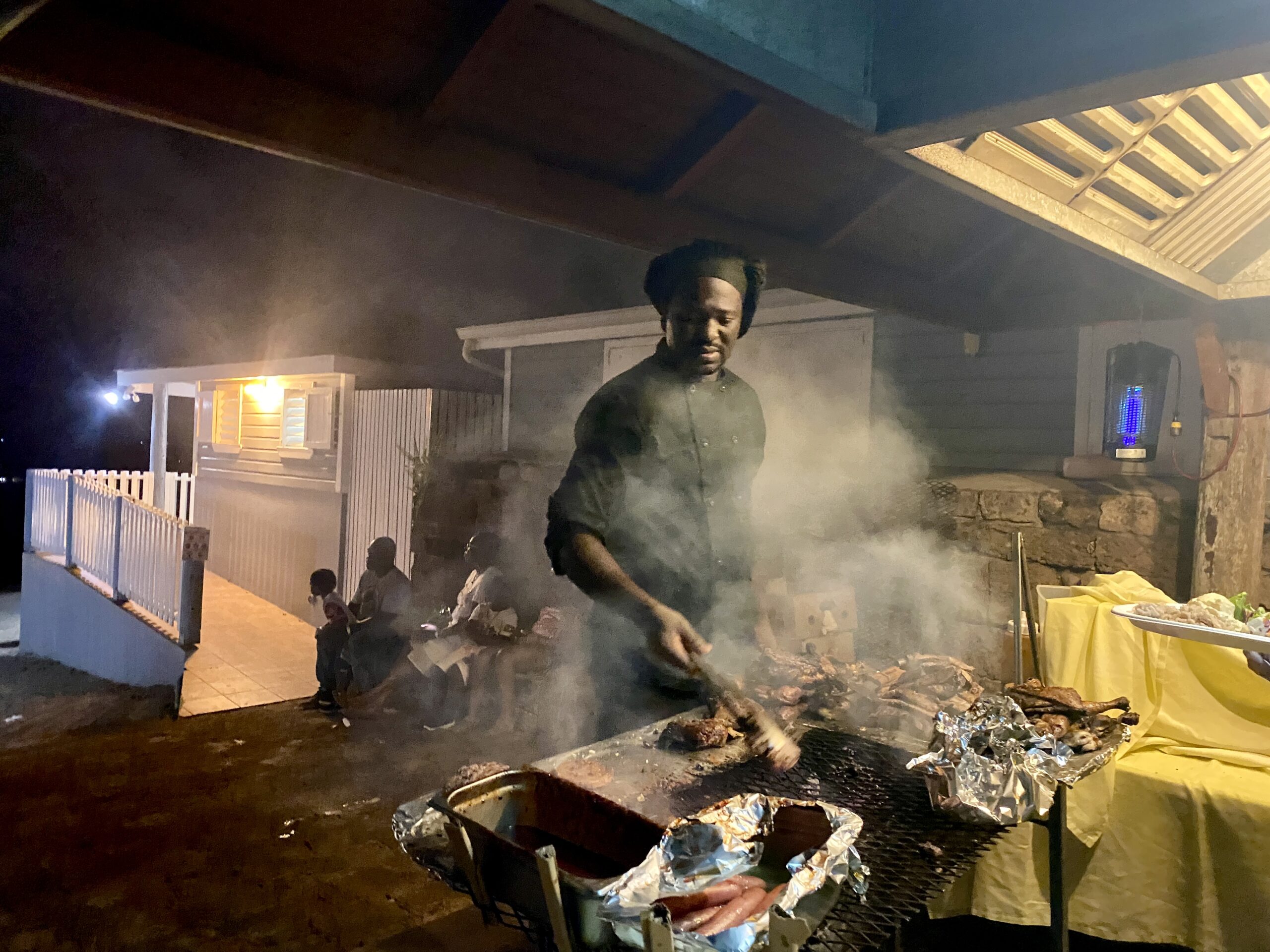
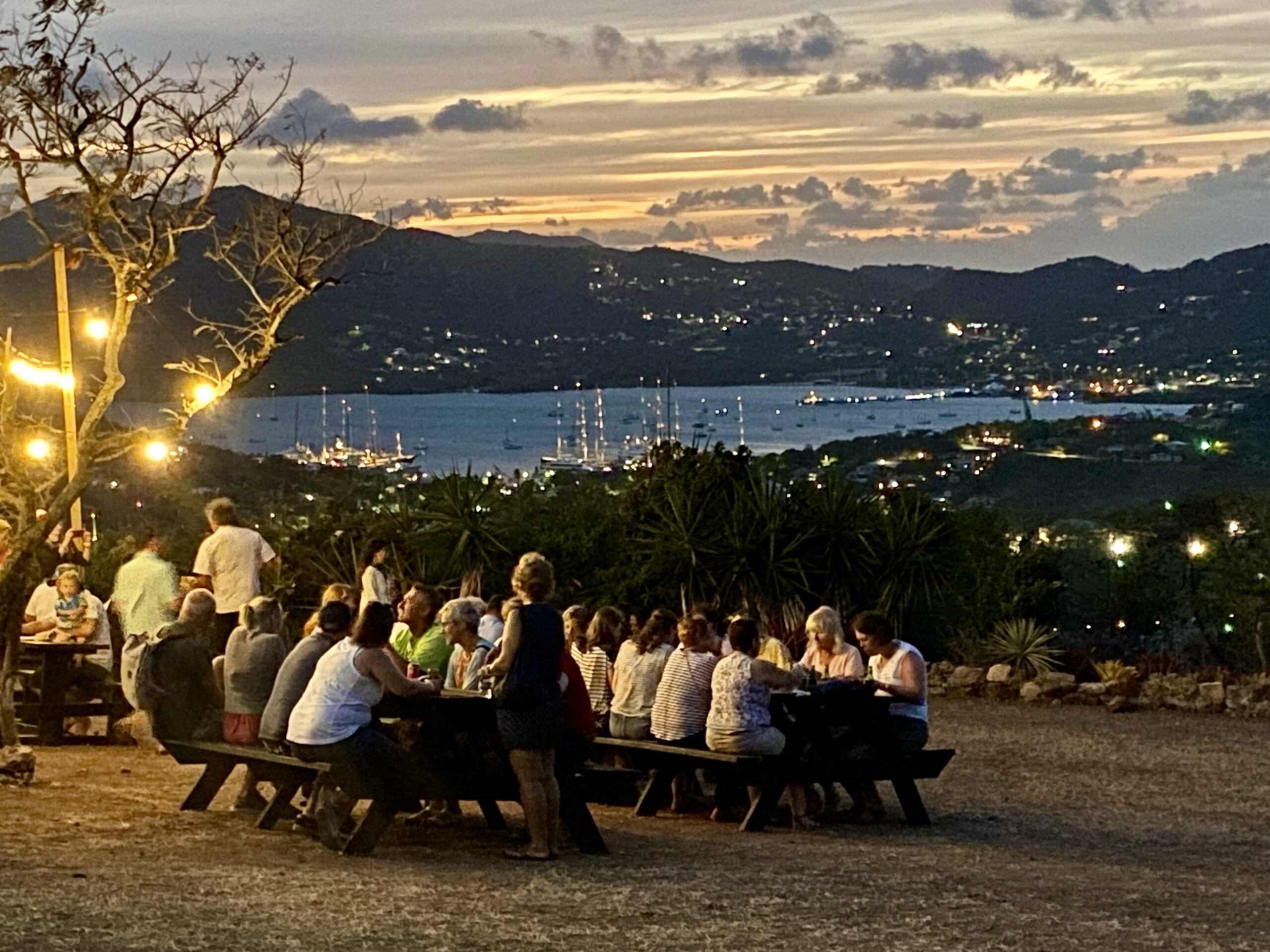
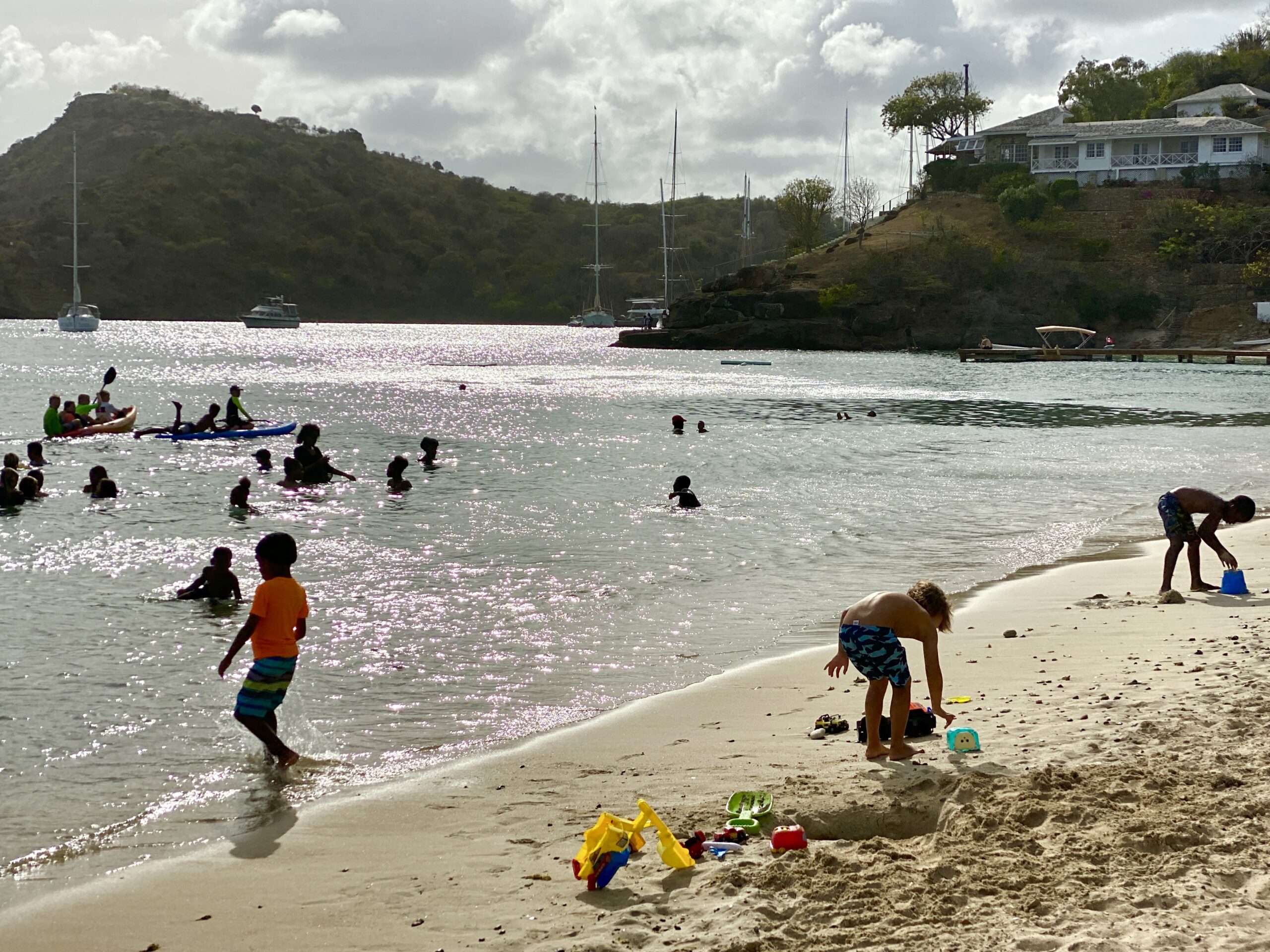
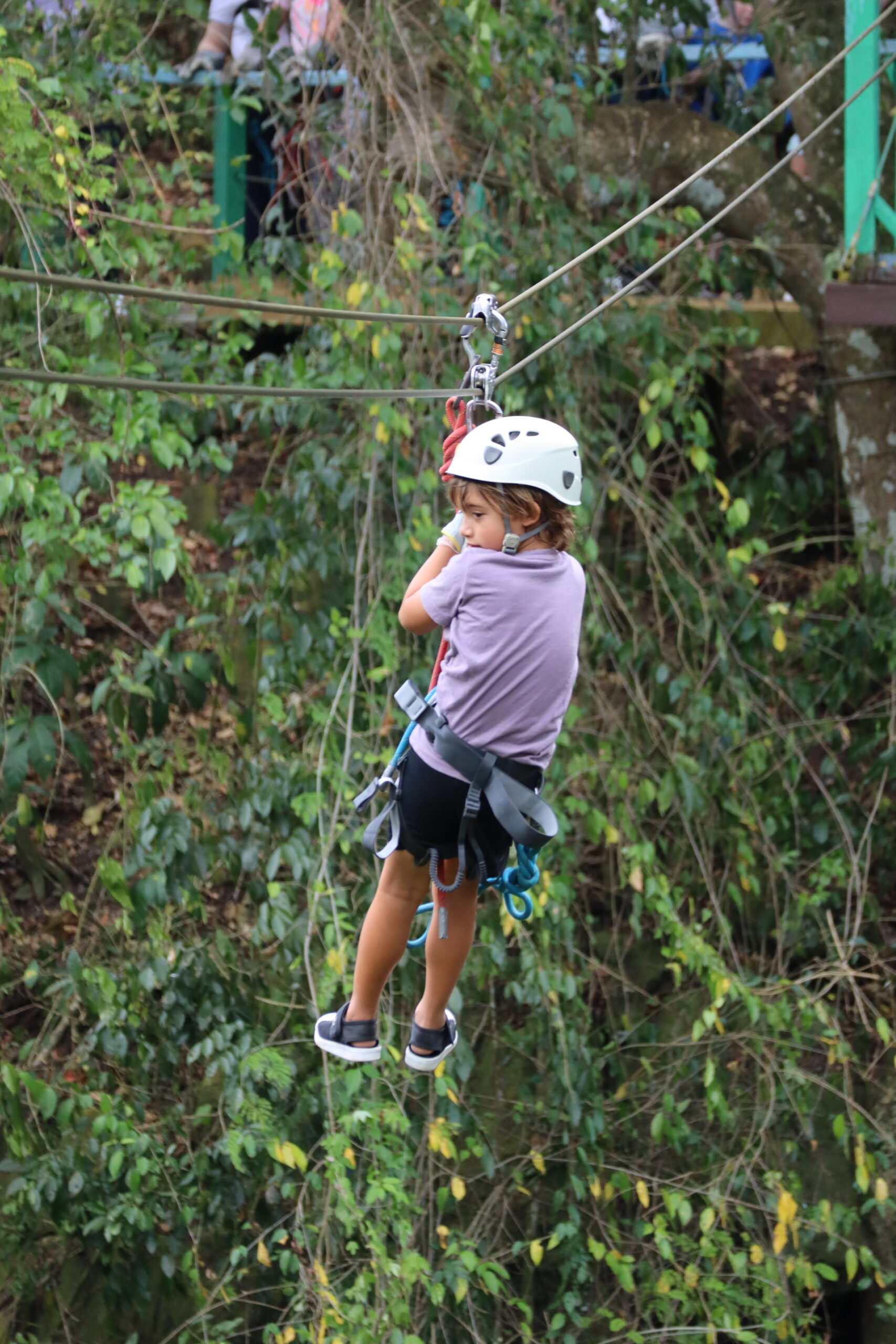


TRANSPORT
The island of Barbuda is a minuscule 62 square miles in size, whilst Antigua is almost twice the size, occupying an area of 108 square miles. It is a mere 13 miles from east to west coast. Dependent on what time you are travelling, it can take an hour or two to get from north to south as the roads can get very congested at peak times and the mountainous road conditions are not the greatest, which prolong the journey. Main routes in and out of the capital are particularly congested, so aim to avoid these during peak times if possible.
Exploring Antigua & Barbuda by public transport is a great way to immerse yourself in local culture while discovering all this stunning region has to offer. From reliable bus routes connecting major towns and cities across both islands, right through to scenic ferry rides between them – it opens you up to adventure! So whether you’re looking for an economical way to get around the island or want some flexibility whilst visiting key sights, here’s our guide to the transport services on the island.
CAR HIRE
Car hire gives you the freedom to explore many of the hidden gems that may not be accessible by other means of transportation. So we would favour renting a vehicle as the best option for exploring both islands to the max.
You can rent cars from several rental agencies located throughout both islands, with prices varying dependant on the type of vehicle you choose. We would recommend that you upgrade to an SUV as a lot of the roads are rugged with varying degrees of inclines.
You should do some research before committing to a rental company. Compare rates across different companies and read reviews from past customers before making your final decision. It’s also worth asking about any special offers or discounts that may be available – many rental companies offer reduced rates for long-term rentals or packages that include additional extras like insurance, baby seats or GPS navigation systems. We used the comparison site Car Rentals to find a competitive deal for our trip.
Like most countries in the Caribbean, driving laws in Antigua & Barbuda are slightly different than what you may be used to back home. It is important to note that traffic drives on the left-hand side on both islands so be sure to brush up on your driving skills if this is not the norm for you. Speed limits vary between towns and cities; always check posted speed limit signs before accelerating too quickly, as you may face a fine.
Finally, be sure to familiarise yourself with local laws regarding parking; parking violations are common tourist traps so it pays to know where it is safe (and legal) to leave your vehicle unattended.
TAXIS
Taxis are plentiful in Antigua, but they tend to be an expensive option for travel. Ensure that you agree the fare upfront before taking the journey.
A taxi ride from St John’s to the Dockyard area should cost around $15-$20 USD and a ride from Codrington (Barbuda) to the airport will likely set you back around $30-$35 USD. Taxis can be hailed from any street corner or booked ahead of time with one of many local companies via sites such as Welcome Pick Ups. You may be able to negotiate lower fares with some local taxi drivers/companies dependent on your destination and if booking a return journey etc.
For your personal safety, when taking taxis make sure that your driver has a valid license and insurance documents which should be clearly displayed inside the vehicle.
Ferries
To move between both Antigua and Barbuda there is an express ferry service connecting the two main islands. Ferries run daily from St John’s Harbour in Antigua and Deep Bay Harbour on Barbuda Island with tickets costing around $80USD per round-trip per person. Visit Barbuda Express to book tickets. The journey takes approximately 90 minutes each way, making it an ideal option for day trips. You can also book a Barbuda island experience tour with the company for approx $160USD per person.
BUSES
The bus system operates from 5am to midnight and most routes are inexpensive, costing around $1 USD per journey. There are also express services that cost $3USD to $5USD per trip and run between St John’s and English Harbour. As they don’t stop along the way, these services are much faster than regular buses but also more expensive.
Buses are a popular way to travel and great for meeting the friendly locals. Antigua has an extensive bus network that covers all parts of the island, so if you want to get out and explore all the sights, it’s relatively simple to do so. Most buses run from St John’s (the capital city) to other major towns, such as All Saints and Willikies or Codrington (largest town) in Barbuda.
It’s important to note that exact change is required when paying for a ticket as they do not have any on-board change capabilities. Since many routes have limited service, only running twice or three times daily – it’s best to check the schedule in advance if you’re relying on public transportation for your commute. Personally we find bus timetables baffling so tend to avoid this mode of transport, but sites such as Moovit are designed to help with your travel plans.
AIR TRAVEL
There are options to fly to and from Barbuda via a small seven seater plane or helicopter. With regards to plane travel, there are officially two flights each day to Barbuda from Antigua run by SVG Airlines. One departs at around 7.30am (plus return) in the early morning and another in the late afternoon at around 4.30pm (plus return). As SVG run a private chartered service, sometimes there may be more flights available with empty seats that you can book, so it’s always worth asking about extra flights on the day. Note, that flights can also be cancelled without notice so the service is not wholly reliable.
Calvin Air Helicopters operate tours of Antigua, Barbuda and Montserrat allowing you to take in the magnificent views from a bird’s eye view. A thrilling adventure.

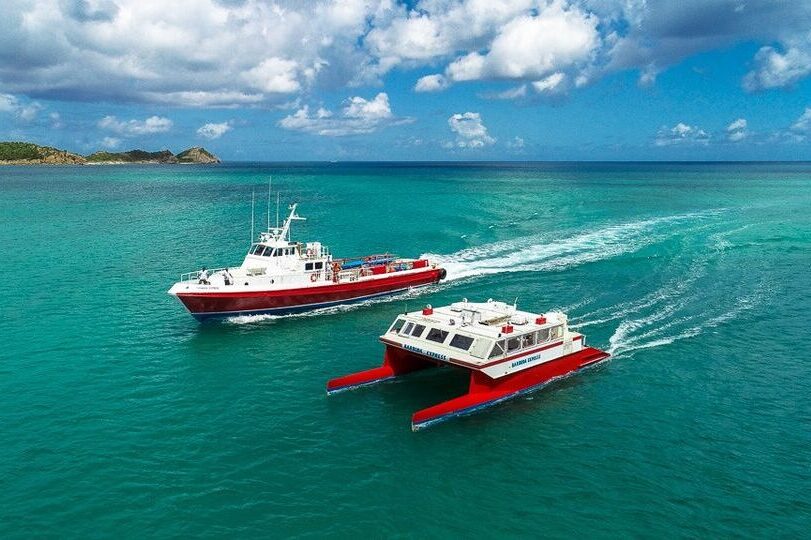
WEATHER
As with many of the Caribbean islands, whatever time of the year you visit, you are likely to experience warm sunshine and some showers. The temperatures however, are relatively consistent throughout the year ranging from 25-30°C (77-86°F). It is worth noting that the temperature on the island always feels a few degrees warmer than you would expect, as the heat is incredibly humid. It is really only on the clifftops of the east coast where you would benefit from a consistent sea breeze.
The cooler months tend to be between December and February, while it is slightly warmer between June and August. Generally speaking, the islands experience two seasons – a wet hurricane season from June to November; and a dry season from December through to May.
Most people will be travelling to Antigua to laze on one of its 365 beaches, so the best time to travel would be during the dry season from December until May. This period has reduced rainfall recorded which makes outdoor activities more comfortable while still providing plenty of sunshine and warm weather. During this time visitors can explore both islands without fear of strong storms or hurricanes, making it perfect for adventure seekers.
However, if you don’t mind braving higher temperatures, the summer months are still a good time to visit as you will benefit from off peak rates and less tourists. There will be plenty of sunshine and less precipitation than the rainy season. Plus, there are lots of fun festivals happening throughout this period such as Carnival and Sailing Week which make a summer visit worthwhile.
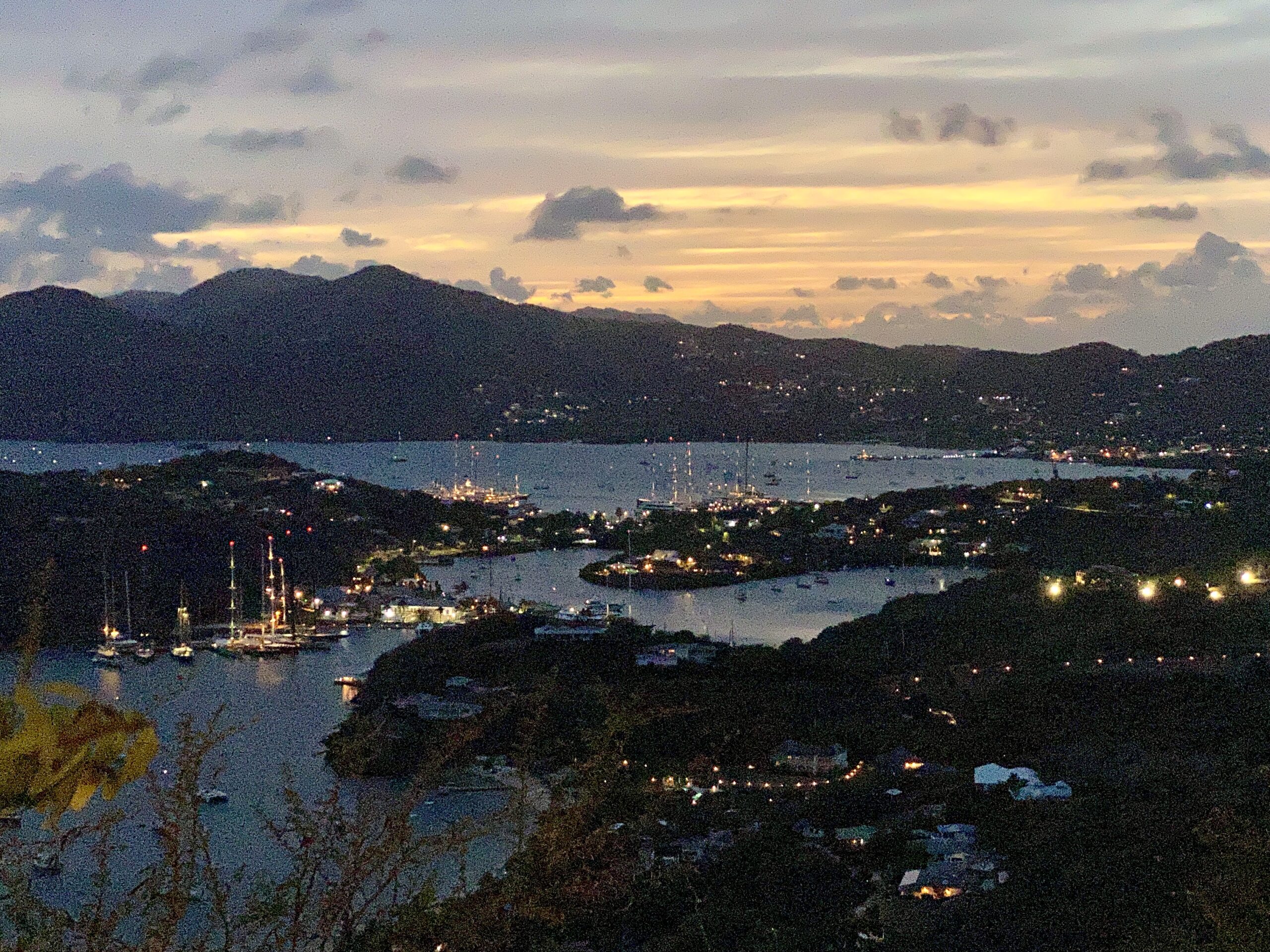
PACK LIKE A PRO
Everyone travels to Antigua for the beautiful golden sands and clear waters, so make sure you come beach ready with essentials such as swimwear, cover ups, flip flops, snorkels, suncream, mosquito repellant, inflatables, go pro, beach shade, bucket and spade!
You may be able to buy some items on the island but it is limited for choice and you will pay a premium, so bring as much as you can squeeze in. Also, for water sports enthusiasts, rather than pay the daily hire charges for sports equipment, you may want to transport your own surf board, canoe or paddle board etc which may be cheaper in carriage than daily rates.
Remember, it is HOT so you will not require long sleeves, trousers or enclosed shoes – so save yourself the luggage space! For more pro packing tips and if travelling with children, check out our post filled with all the essentials.
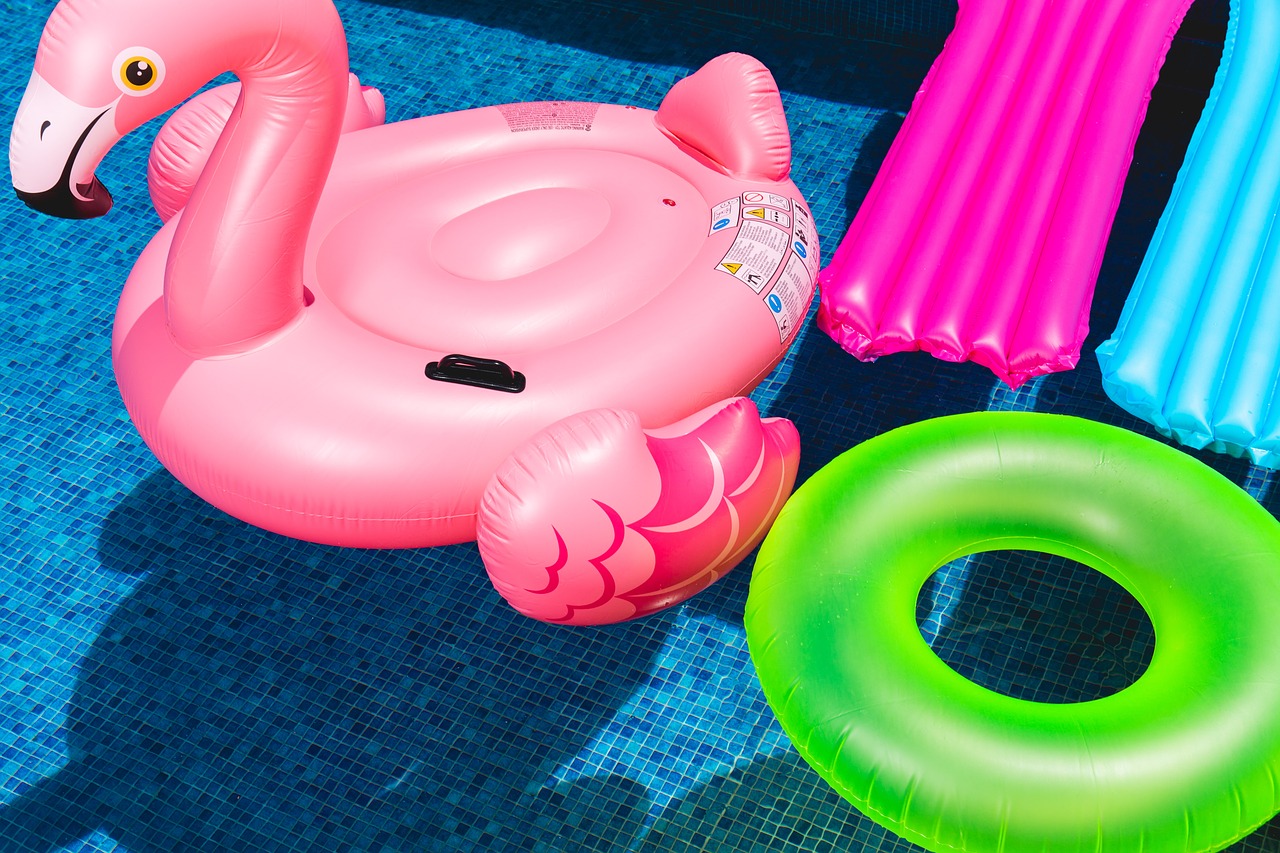


GLOBAL ADVENTURES
If you’d like to chat travel and adventure with Footloose & Three, please drop us a message on our Say Hello page.
June 16, 2022
post a comment
You must be logged in to post a comment.



